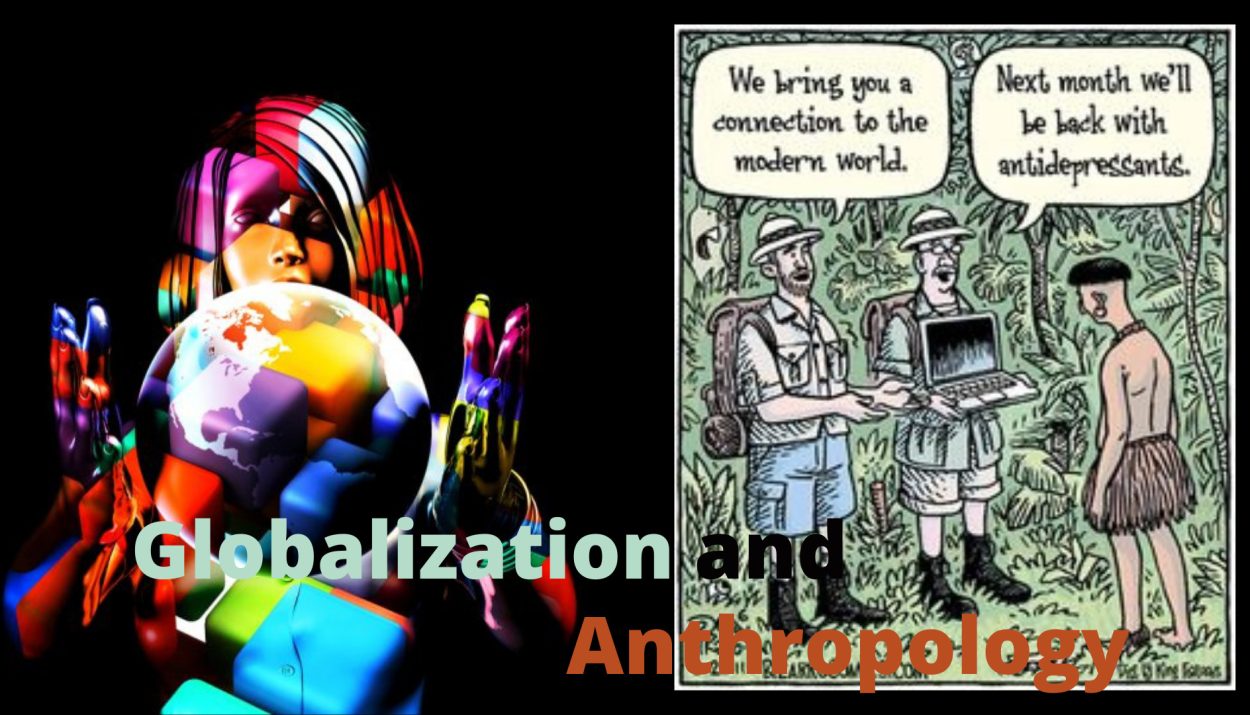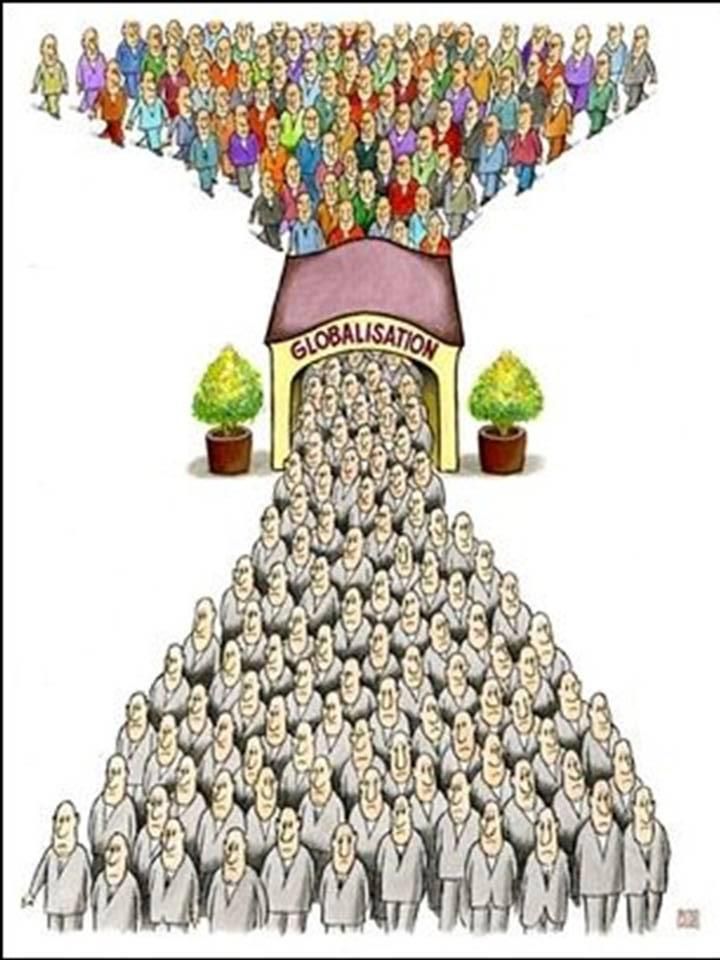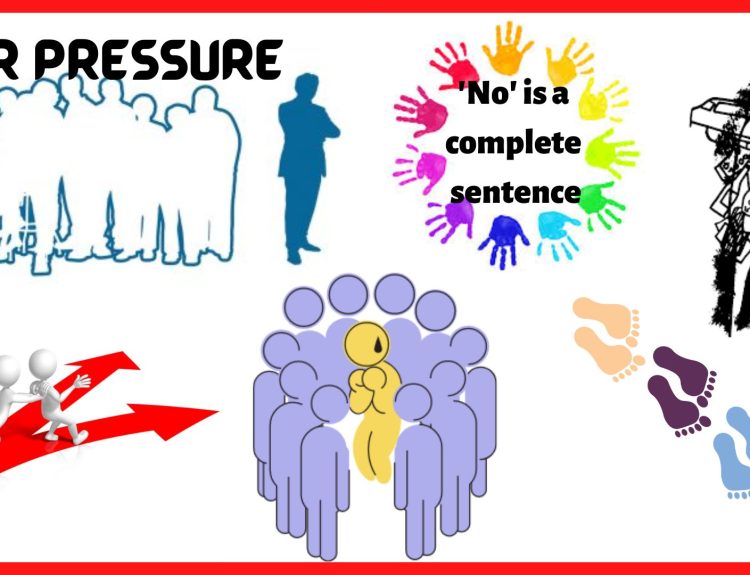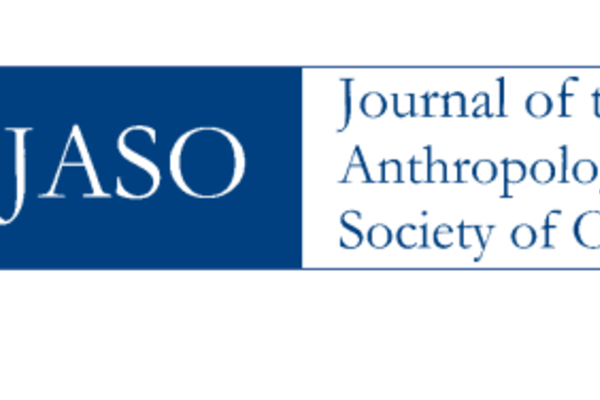The Anthropological Approach to Globalization Aspects Essay
Globalization is discussed in contemporary society as the issue according to which the researchers are inclined to explain all the processes in the modern world.
As a result, the development of the societies and the aspects of the people’s interactions are examined from the larger perspectives, and the results of examination are usually presented in ‘convergence narratives’ which are focused on the idea of globalization as the process which causes the specific compression of the world space where people become more interconnected (Steger 18-19).
It is possible to discuss globalization from many points, but it is necessary to state that the phenomenon of globalization exists, and convergence and connectivity are the main characteristics of this process. Thus, convergence narratives explain the processes which are observed in the real world while analyzing their causes and predicting the outcomes.
In spite of the fact that there are many researchers who state that globalization is the contemporary phenomenon, convergence narratives present the evidence that globalization in different forms was characteristic for various historical periods and it can be discussed as the long-term process; furthermore, these narratives often accentuate the anthropological approach to discussing the issue as closely associated with the aspect of culture.
Convergence narratives discuss globalization as the developed process which is based on the ideas of connectivity, exchange, and sameness. Thus, people all over the world become more and more interconnected because of the use of information and communication technologies, developing transport, and global trade.
Ferguson notes that globalization depends on erasing the borders of cultures, on the easy flow of capitals, and on the transformation of governance systems and approaches (Ferguson 30).
From this point, convergence is observed in each aspect of people’s life and activities, including the culture, society, economy, and politics. The authors of the convergence narratives usually make their conclusions referring to the ethnographic evidence and analysis of the observed tendencies (Steger 19).
Therefore, referring to the real-life ethnographic data and comparison of the processes from the historical perspective, the authors of convergence narratives conclude that the modern world is shrinking, interconnectedness of the cultures and nations is intensifying, the cultures become deterritorialized, and the flows of information and capitals continue to play a significant role in drawing the pattern of the global world’s progress.
Although the researchers can discuss globalization as the new phenomenon, this process should be considered as long-term because the characteristic features of globalization are observed during the ages, and only during several decades, this specific process became known as ‘globalization.’ Steger pays attention to the fact that “globalization is an ancient process that, over many centuries, has crossed distinct qualitative thresholds” (Steger 19).
Thus, only the names of the process change, but the phenomenon based on the idea of convergence remains to be noticeable during the centuries. Globalization is associated with the channels to communicate between the peoples and nations, with the development of international trade and transportation, and with the increased migration.
During the ages, people are focused on inventing the technologies which can be helpful to overcome different geographical and social barriers and borders (Steger 19). From this perspective, the aspects of globalization are observed at different stages of the world’s historical progress.
That is why, to determine the time-frame of the globalization as the long-term process, it is necessary to select the criterion to choose within the range from the pre-historic era to the modern era. While focusing on the progress of technologies, development of the global market, and immigration, it is possible to start with the Industrial Revolution as the process which changed the minds of people about barriers between the nations and societies.
The time-frame of the globalization process starting in the modern era seems to be reasonable because of accentuating the role of trade, industry, transportation, and technology as the factors which stimulate globalization and people’s interconnectedness.
Many convergence narratives discuss the issue of globalization using the anthropological approach. It is important to note that the anthropological approach differs from the other perspectives because the researchers choose to focus on the aspect of culture as the main lens to examine the process of globalization in the world. Thus, culture plays an important role in describing the relations between different peoples and nations.
The process of globalization means the exchange of the cultural principles and values between the nations, and the unique cultural pattern characteristic for different societies becomes subtle (Steger 18-20). For instance, there are no more strict cultural borders in the world relation to traditions, practices, cuisine, and customs. Thus, Asian cooking traditions are followed not only in Eastern countries but around the world.
Yoga is popular among all the Western nations without references to people’s origin. The details help to accentuate the idea that the cultures tend to mix as a result of intensifying global connections. However, Ferguson notes that Africa is not influenced by the globalization process significantly.
The author states that “from the earliest European projects of colonization to the latest structural-adjustment programs, Africa has proved remarkably resistant to a range of externally imposed projects that have aimed to bring it into conformity with Western or ‘global’ models” (Ferguson 27). Thus, following the anthropological approach, African cultures are not affected by Western cultures.
Nevertheless, it is possible to observe that unique African society can influence the Westerners’ traditions, as it is observed about the increased interest in the African religions and ceremonies. From this perspective, the fact that Africa is not influenced by the globalization processes only emphasizes the idea that these processes areobserved widely, in all the parts of the world, except the African continent.
The followers of the anthropological approach rely on the ethnographic evidence and data received as the result of the fieldwork, and these facts can add significantly to the discussion of the globalization processes observed around the world. Anthropology studies the nations and their increased connectivity with the focus on people’s daily practices and activities.
The ethnographic data provides the researchers with the opportunity to conclude the real processes and tendencies in the world. For instance, Markowitz pays attention to the fact that globalization is inflows such as the flows of “money, media, ideas, people and things,” and the researchers need to provide the evidence to support this idea and to demonstrate the flows (Markowitz 333).
It is not enough for the authors of the convergence narratives to state that the compression of the world space is observed and people’s intercultural communications are intensified. It is necessary to provide real data to support these statements. Thus, anthropology operates the ethnographic and fieldwork data to conclude about the presence and spread of this or that process.
That is why, the anthropological approach to discussing globalization allows focusing on details, on the real-life examples, and on the discussion of the process as affecting each person in the world.
However, the anthropological approach cannot explain the processes of globalization from the perspectives of geography, justice, and challenges. If the geographical approach is rather popular to discuss the issue of globalization, the focuses on justice and globalization and challenges of globalization are new approaches to speaking about the global interconnectedness.
Thus, Rankin notes that “in ‘situating’ social and economic processes, geographers approach space not as a neutral or fixed container of human activity, but rather as playing a structuring role in those processes” (Rankin 720).
In his turn, Markowitz accentuates the role of justice in the context of globalization processes because “globalization without global justice and open borders can, therefore, take on odious and ominous implications” (Markowitz 334). From this point, the anthropological approach is effective to examine the idea of globalization from many sides and perspectives, but it can be improved with the help of new modern methods to discuss the issue in detail.
Globalization is the controversial and challenging process which is noted by many researchers and which is discussed with references to many approaches, including the anthropological one.
It is stated in convergence narratives that globalization means the accentuated connectivity of the nations and societies, and this discussion of the issue is rather reasonable and effective. During the centuries, people tend to find ways how to interconnect easily, and today, these ways are discussed under the new name of the issue of globalization.

Works Cited
Ferguson, James. “Globalizing Africa: Observations from an Inconvenient Continent”. Global Shadows: Africa in the Neoliberal World Order . Ed. James Ferguson. USA: Duke University Press, 2006. 25-49. Print.
Markowitz, Fran. “Talking about Culture: Globalization, Human Rights and Anthropology”. Anthropological Theory 4.3 (2004): 329-352. Print.
Rankin, Katharine. “Anthropologies and Geographies of Globalization”. Progress in Human Geography 27.6 (2003): 708–734. Print.
Steger, Manfred. “Globalization and History: Is Globalization a New Phenomenon?” Globalization: A Very Short Introduction . Ed. Manfred Steger. USA: Oxford University Press, 2013. 17-36. Print.
- Chicago (A-D)
- Chicago (N-B)
IvyPanda. (2020, March 16). The Anthropological Approach to Globalization Aspects. https://ivypanda.com/essays/the-anthropological-approach-to-globalization-aspects/
"The Anthropological Approach to Globalization Aspects." IvyPanda , 16 Mar. 2020, ivypanda.com/essays/the-anthropological-approach-to-globalization-aspects/.
IvyPanda . (2020) 'The Anthropological Approach to Globalization Aspects'. 16 March.
IvyPanda . 2020. "The Anthropological Approach to Globalization Aspects." March 16, 2020. https://ivypanda.com/essays/the-anthropological-approach-to-globalization-aspects/.
1. IvyPanda . "The Anthropological Approach to Globalization Aspects." March 16, 2020. https://ivypanda.com/essays/the-anthropological-approach-to-globalization-aspects/.
Bibliography
IvyPanda . "The Anthropological Approach to Globalization Aspects." March 16, 2020. https://ivypanda.com/essays/the-anthropological-approach-to-globalization-aspects/.
- Anthropological Linguistics: The Main Branches
- Cannibalism from an Anthropological View
- Anthropological Family Portrait
- The Connection Between Totemism and Structuralism
- Archaeology of Ancient People
- When an Anthropology Research Offers Fruitful Results
- Patrilineal and Matrilineal Descent Groups
- Cultural Anthropology Article: A Balance Between the Social, Political, and Environmental Justice
- Subject List
- Take a Tour
- For Authors
- Subscriber Services
- Publications
- African American Studies
- African Studies
- American Literature
Anthropology
- Architecture Planning and Preservation
- Art History
- Atlantic History
- Biblical Studies
- British and Irish Literature
- Childhood Studies
- Chinese Studies
- Cinema and Media Studies
- Communication
- Criminology
- Environmental Science
- Evolutionary Biology
- International Law
- International Relations
- Islamic Studies
- Jewish Studies
- Latin American Studies
- Latino Studies
- Linguistics
- Literary and Critical Theory
- Medieval Studies
- Military History
- Political Science
- Public Health
- Renaissance and Reformation
- Social Work
- Urban Studies
- Victorian Literature
- Browse All Subjects
How to Subscribe
- Free Trials
In This Article Expand or collapse the "in this article" section Globalization
Introduction.
- Development
- State Visions in Betterment
- Distributors
- Neoliberal Economics
- Identity Construction
- Migration and Transnationalism
- Tourism and Consumption
- Global Resource Extraction and Usage
- Exporting Western Conservation
- Social Movements
Related Articles Expand or collapse the "related articles" section about
About related articles close popup.
Lorem Ipsum Sit Dolor Amet
Vestibulum ante ipsum primis in faucibus orci luctus et ultrices posuere cubilia Curae; Aliquam ligula odio, euismod ut aliquam et, vestibulum nec risus. Nulla viverra, arcu et iaculis consequat, justo diam ornare tellus, semper ultrices tellus nunc eu tellus.
- Agriculture
- Anthropology and Militarism
- Anthropology of Africa
- Anthropology of Language Contact and its Sociocultural Contexts
- Anthropology of Liberalism
- Anthropology of NGOs
- Applied Anthropology
- Archaeology and Political Evolution
- Business Anthropology
- Colonialism
- Commodities
- Consumerism
- Economic Anthropology
- Environmental Anthropology
- Eric R. Wolf
- Francophonie
- Global Health
- Human Rights
- Human Rights Films
- Identity Politics
- Indigeneity
- Legal Anthropology
- Legal Pluralism
- Media Anthropology
- Mesoamerican Archaeology
- Mexican Migration to the United States
- Missionization
- Nationalism
- Political Anthropology
- Postsocialism
- Religious Conversion
- Scandinavia
- Settler Colonialism
- Transnationalism
- Urban Anthropology
- Virtual Ethnography
Other Subject Areas
Forthcoming articles expand or collapse the "forthcoming articles" section.
- Anthropology of Corruption
- University Museums
- Find more forthcoming articles...
- Export Citations
- Share This Facebook LinkedIn Twitter
Globalization by Gregory S. Gullette LAST REVIEWED: 11 January 2012 LAST MODIFIED: 11 January 2012 DOI: 10.1093/obo/9780199766567-0010
In effect, globalization is the development and proliferation of complex, interdependent international connections created through the movement of capital, natural resources, information, culture, and people across national borders. This includes the social and cultural resistances and receptions to these varied movements. The marked increase in anthropological and allied disciplines research that either specifically examines and unpacks the idea of globalization, or uses the structural and theoretical components to examine particular case studies, has largely transformed globalization into a ubiquitous framework or concept. As a result, globalization is naturalized for many—something that inevitably exists and does so in particular forms. Much of the work that anthropologists conduct within globalization studies informs, and is informed by, research in fields such as economics, sociology, and human geography, to name a few. Extensive intradisciplinary and interdisciplinary networks are characteristic of anthropological research in globalization. As this bibliographic source demonstrates, the actual areas of study and the processes that constitute globalization (e.g., migration, tourism, neoliberalism, identity formation, urban planning and development) are not clearly demarcated from other research areas, nor are they taken up unproblematically by anthropologists. Debate often centers on how to define the field of study and determine what (transnational) processes form the foundation of globalization. Additionally, anthropologists debate globalization’s heuristic relevance in research and the value of particular theoretical frameworks when determining its contours and effects on social, political, economic, and environmental systems.
Foundational Texts
Constructing a bibliographic source of foundational texts is open to interpretation. Many of the texts included throughout this larger article are rightfully considered classic or timely accounts of the effects of globalization. However, for readers seeking a broad introduction to the anthropology of globalization, Appadurai 1996 , Canclini 1995 , Kearney 1995 , and Lewellen 2002 present anthropological accounts of globalization as it was first emerging within, and shaping, the discipline, as well as presenting analysis on how globalization reworks cultural identities. Inda and Rosaldo 2008 continues to update some of the most theoretically engaging and progressive writings in the field through this edited volume. Additionally, Barber 1996 , Hardt and Negri 2001 , and Stiglitz 2002 all illustrate the varied complications that emerge within complex sociopolitical, environmental, and economic frameworks that intimately link international business with nation-states. Hardt and Negri 2001 in particular presents a detailed analysis on possible new global orderings created through such diffused sociopolitical networks. Lastly, whereas many scholars in other disciplines might approach globalization from the top down, Crawford 2008 skillfully illustrates the power of anthropological research within globalization through village-level ethnographic analysis.
Appadurai, Arjun. 1996. Modernity at large: Cultural dimensions of globalization . Minneapolis: Univ. of Minnesota Press.
By utilizing the imagination as a force in shaping the contours of globalization, Appadurai illustrates the surprising ways people are remaking modernity and creating alternatives to the nation-state.
Barber, Benjamin R. 1996. Jihad vs. McWorld: How globalism and tribalism are reshaping the world . New York: Random House.
An often-debated view of globalization, in which neoliberal capitalism and factionalism are pitted against each other, with dangerous consequences.
Canclini, Nestor Garcia. 1995. Hybrid cultures: Strategies for entering and leaving modernity . Minneapolis: Univ. of Minnesota Press.
Using works of Habermas, Foucault, and Gramsci, Canclini examines the ways Latin American cultural identities are threatened in global orderings.
Crawford, David. 2008. Moroccan households in the world economy: Labor and inequality in a Berber village . Baton Rouge: Louisiana State Univ. Press.
An impressive combination of village-level analysis on the ways in which households handle social, economic, and environmental fluctuations within expanding global capitalist markets.
Hardt, Michael, and Antonio Negri. 2001. Empire . Cambridge, MA: Harvard Univ. Press.
A profound look at the end or diminishment of imperialism through government, military, and nation-state control to a new global ordering produced through diffused sociopolitical networks.
Inda, Jonathan Xavier, and Renato Rosaldo. 2008. The anthropology of globalization: A reader . 2d ed. Oxford: Blackwell Publishers.
A new update on a classic text that includes some of the most insightful and dramatic ethnographic writings on globalization.
Kearney, Michael. 1995. The local and the global: The anthropology of globalization and transnationalism. Annual Review of Anthropology 24:547–565.
DOI: 10.1146/annurev.an.24.100195.002555
A classic writing that examines the changing speed and extensiveness of globalization through migration and the movement of commodities, capital, ideas, symbols, and information in transnational spaces.
Lewellen, Ted C. 2002. The anthropology of globalization: Cultural anthropology enters the 21st century . Westport, CT: Bergin & Garvey.
A work primarily oriented toward advanced undergraduate students, Lewellen broadly defines globalization and highlights the way past events shape our current understandings of globalization and perhaps its future direction.
Stiglitz, Joseph E. 2002. Globalization and its discontents . New York: W. W. Norton.
An extensive account on the failures of development and modernization. Stiglitz analyzes, in accessible writing, how the International Monetary Fund, the World Bank, and the World Trade Organization must reorient their practices if equitable global growth is to be achieved.
back to top
Users without a subscription are not able to see the full content on this page. Please subscribe or login .
Oxford Bibliographies Online is available by subscription and perpetual access to institutions. For more information or to contact an Oxford Sales Representative click here .
- About Anthropology »
- Meet the Editorial Board »
- Africa, Anthropology of
- Animal Cultures
- Animal Ritual
- Animal Sanctuaries
- Anorexia Nervosa
- Anthropocene, The
- Anthropological Activism and Visual Ethnography
- Anthropology and Education
- Anthropology and Theology
- Anthropology of Islam
- Anthropology of Kurdistan
- Anthropology of the Senses
- Anthrozoology
- Antiquity, Ethnography in
- Archaeobotany
- Archaeological Education
- Archaeology
- Archaeology and Museums
- Archaeology and Race
- Archaeology and the Body
- Archaeology, Gender and
- Archaeology, Global
- Archaeology, Historical
- Archaeology, Indigenous
- Archaeology of Childhood
- Archaeology of the Senses
- Art Museums
- Art/Aesthetics
- Autoethnography
- Bakhtin, Mikhail
- Bass, William M.
- Benedict, Ruth
- Binford, Lewis
- Bioarchaeology
- Biocultural Anthropology
- Biological and Physical Anthropology
- Biological Citizenship
- Boas, Franz
- Bone Histology
- Bureaucracy
- Cargo Cults
- Charles Sanders Peirce and Anthropological Theory
- Christianity, Anthropology of
- Citizenship
- Class, Archaeology and
- Clinical Trials
- Cobb, William Montague
- Code-switching and Multilingualism
- Cognitive Anthropology
- Cole, Johnnetta
- Crapanzano, Vincent
- Cultural Heritage Presentation and Interpretation
- Cultural Heritage, Race and
- Cultural Materialism
- Cultural Relativism
- Cultural Resource Management
- Culture and Personality
- Culture, Popular
- Curatorship
- Cyber-Archaeology
- Dalit Studies
- Dance Ethnography
- de Heusch, Luc
- Deaccessioning
- Design, Anthropology and
- Digital Anthropology
- Disability and Deaf Studies and Anthropology
- Douglas, Mary
- Drake, St. Clair
- Durkheim and the Anthropology of Religion
- Embodied/Virtual Environments
- Emotion, Anthropology of
- Environmental Justice and Indigeneity
- Ethnoarchaeology
- Ethnocentrism
- Ethnographic Documentary Production
- Ethnographic Films from Iran
- Ethnography
- Ethnography Apps and Games
- Ethnohistory and Historical Ethnography
- Ethnomusicology
- Ethnoscience
- Evans-Pritchard, E. E.
- Evolution, Cultural
- Evolutionary Cognitive Archaeology
- Evolutionary Theory
- Experimental Archaeology
- Federal Indian Law
- Feminist Anthropology
- Film, Ethnographic
- Forensic Anthropology
- Frazer, Sir James George
- Geertz, Clifford
- Gender and Religion
- GIS and Archaeology
- Globalization
- Gluckman, Max
- Graphic Anthropology
- Haraway, Donna
- Healing and Religion
- Health and Social Stratification
- Health Policy, Anthropology of
- Heritage Language
- House Museums
- Human Adaptability
- Human Evolution
- Humanistic Anthropology
- Hurston, Zora Neale
- India, Masculinity, Identity
- Indigenous Boarding School Experiences
- Indigenous Economic Development
- Indigenous Media: Currents of Engagement
- Industrial Archaeology
- Institutions
- Interpretive Anthropology
- Intertextuality and Interdiscursivity
- Laboratories
- Language and Emotion
- Language and Law
- Language and Media
- Language and Race
- Language and Urban Place
- Language Contact and its Sociocultural Contexts, Anthropol...
- Language Ideology
- Language Socialization
- Leakey, Louis
- Liberalism, Anthropology of
- Linguistic Anthropology
- Linguistic Relativity
- Linguistics, Historical
- Literary Anthropology
- Local Biologies
- Lévi-Strauss, Claude
- Malinowski, Bronisław
- Margaret Mead, Gregory Bateson, and Visual Anthropology
- Maritime Archaeology
- Material Culture
- Materiality
- Mathematical Anthropology
- Matriarchal Studies
- Mead, Margaret
- Medical Anthropology
- Medical Technology and Technique
- Mediterranean
- Mendel, Gregor
- Mental Health and Illness
- Militarism, Anthropology and
- Morgan, Lewis Henry
- Multispecies Ethnography
- Museum Anthropology
- Museum Education
- Museum Studies
- NAGPRA and Repatriation of Native American Human Remains a...
- Narrative in Sociocultural Studies of Language
- Needham, Rodney
- Neoliberalism
- NGOs, Anthropology of
- Niche Construction
- Northwest Coast, The
- Oceania, Archaeology of
- Paleolithic Art
- Paleontology
- Performance Studies
- Performativity
- Perspectivism
- Philosophy of Museums
- Plantations
- Postprocessual Archaeology
- Poverty, Culture of
- Primatology
- Primitivism and Race in Ethnographic Film: A Decolonial Re...
- Processual Archaeology
- Psycholinguistics
- Psychological Anthropology
- Public Archaeology
- Public Sociocultural Anthropologies
- Religion and Post-Socialism
- Repatriation
- Reproductive and Maternal Health in Anthropology
- Reproductive Technologies
- Rhetoric Culture Theory
- Rural Anthropology
- Sahlins, Marshall
- Sapir, Edward
- Science Studies
- Secularization
- Sex Estimation
- Sign Language
- Skeletal Age Estimation
- Social Anthropology (British Tradition)
- Socialization
- Society for Visual Anthropology, History of
- Socio-Cultural Approaches to the Anthropology of Reproduct...
- Sociolinguistics
- Sound Ethnography
- Space and Place
- Stable Isotopes
- Stan Brakhage and Ethnographic Praxis
- Structuralism
- Studying Up
- Sub-Saharan Africa, Democracy in
- Surrealism and Anthropology
- Technological Organization
- Trans Studies in Anthroplogy
- Tree-Ring Dating
- Turner, Edith L. B.
- Turner, Victor
- Visual Anthropology
- Whorfian Hypothesis
- Willey, Gordon
- Wolf, Eric R.
- Writing Culture
- Youth Culture
- Zora Neale Hurston and Visual Anthropology
- Privacy Policy
- Cookie Policy
- Legal Notice
- Accessibility
Powered by:
- [66.249.64.20|185.80.151.9]
- 185.80.151.9
An Introduction to Globalization
Learning objectives.
- Define globalization.
- Discuss the historical foundations of contemporary globalization.
- Evaluate the advantages and disadvantages of the intensification of globalization.
- Discuss the implications of globalization for anthropology.
Overview and Early Globalization b y Lauren Miller Griffith and Jonathan S. Marion
Globalization is a word commonly used in public discourse, but it is often loosely defined in today’s society (much like the word “culture” itself). First appearing in the English language in the 1940s, the term “globalization” is now commonplace and is used to discuss the circulation of goods, the fast and furious exchange of ideas, and the movement of people. [1] Despite its common use, it seems that the many people using the term are often not defining it in the same way. Some treat globalization as simply an economic issue while others focus more on the social and political aspects. What is clear, however, is that globalization has influenced many different facets of contemporary social life. This actually makes globalization an ideal topic of study for anthropologists, who pride themselves on taking a holistic approach to culture (see the Development of Anthropological Ideas chapter). For our purposes, we adopt political scientist Manfred Steger’s definition of globalization : “the intensification of worldwide social relations which link distant localities in such a way that local happenings are shaped by events occurring many miles away and vice versa.” [2]
It is challenging to determine precisely when globalization began. Although some people discuss globalization as if it was an entirely new process without historical antecedents, in truth its precursors have been going on for a very long time. In this chapter, we argue that the distinguishing feature of globalization in the contemporary era is the speed, rather than the scope, of global interactions. Early modern technological innovations hastened globalization. [3] For instance, the invention of the wheel created a need for permanent roads that would facilitate transport of animal drawn carts. These wheeled vehicles increased people’s mobility, which in turn facilitated the sharing of both goods and ideas. Even before the invention of the wheel, the creation of written communication systems allowed ideas to be shared between people in distant locations.
Certainly extensive empires have existed at various times throughout human history, including Chinese dynasties (the Han dynasty, 206 BCE-220 CE, for instance, reached the same size the Roman Empire achieved much later); the Ottoman Empire , and the Roman Empire . Most recently in world history, European colonial expansion into Africa, Asia and the Americas marked another landmark of globalization. C olonialism refers to the political, social, economic, and cultural domination of a territory and its people by a foreign power for an extended period of time. Technically, colonialism c an be practiced by any group that is powerful enough to subdue other groups—and this certainly would be an accurate term for Ottoman and Roman imperial expansion—but as a term, colonialism is typically associated with the actions of European countries starting in the 1500s and lasting through the 1900s. During this period, European colonial powers divvied up “unclaimed” land with little regard for ethnic groups who already lived in those places, their political structures, belief systems, or lifeways. By 1914, European nations ruled more than 85 percent of the world, and it is not by accident that the image of the world most often seen on conventional maps continues to be very Eurocentric in its orientation ( see map ).
Colonialism in the Americas was the result of European conquest of newly “discovered” territories during the Age of Exploration. Columbus was likely not the first explorer to reach the Americas, but his “discovery” intensified Europeans’ desires to colonize this “new” territory. European leaders began expanding their spheres of influence in Europe before turning their attention to lands further afield; the successes they had in colonizing nearby lands, amplified by a growing demand for trade items found in “the Orient,” fueled their enthusiasm for exploration outside the region. The Catholic Church also supported this economically motivated mission, as it coincided with a weakening of their religious-stronghold in places like England, Germany, and France.
One of the most devastating features of the colonial period was the forced labor of both indigenous Americans and Africans who were enslaved and shipped off as chattel. Between 1525 and 1866, 12.5 million slaves were sent to the New World from Africa. Treated as chattel, only 10.7 million Africans survived until arriving in the Americas. The U.S. imported approximately 450,000 of these slaves. It is not by coincidence that the ethically irredeemable shipment of slaves to the Americas corresponded to massive shipments of goods to Europe and down the west coast of Africa. As far as the total scope of international flows, however, European colonialism pales in comparison to the scope of globalization that has transpired since the 1990s.
Contemporary globalization, at least in terms of economics, is perhaps best pinpointed as coinciding with the conclusion of World War II and the Bretton Woods Conference. [4] The agreements made at the Bretton Woods Conference led to the creation of the International Monetary Fund (IMF) as well as the International Bank for Reconstruction and Development, which later became the World Bank (WB). It also laid the groundwork for the World Trade Organization (WTO). Taken together, these three organizations have had a tremendous role in accelerating globalization and in shaping the lives of people in the developing world. The very idea of governing bodies like the United Nations, or regulatory institutions like the IMF and WB, that exist outside the confines of a specific nation-state—now widely referenced as Non-Governmental Organizations (NGOs)—contributes to undermining local sovereignty. [5] Although local, regional, and national identities and affiliations retain salience in the global era, their importance has shifted relative to the growing sense many people have of being citizens of the world.
The world is becoming more and more interconnected. Globalization changes how people consume, work and live almost everywhere on the world. Today, many economic, political, cultural or ecological relationships are not explainable from a national perspective. At the same time, a controversial debate about the consequences of globalization has begun. But what are the main causes for globalization? In what areas it is most prominent? And who are the winners and looser of globalization? These are the questions this animated Video Clip on Globalization of the WissensWerte series deals with.
Advantages of the Intensification of Globalization b y Lauren M. Griffith and Jonathan S. Marion
Although some within the discipline argue that anthropologists should report objectively on the cultures and social phenomena they study, given the structure of the discourse surrounding globalization, it is increasingly difficult to avoid being pigeonholed as “pro” or “anti” globalization. In truth though, globalization has had both positive and negative impacts.
As optimists, we will start with the “glass-half-full” interpretation of globalization. Political Scientist Manfred Steger has argued that “humane forms of globalization” have the potential to help us deal with some of the most pressing issues of our time, like rectifying the staggering inequalities between rich and poor or promoting conservation. [6] Media has made people in the Global North increasingly aware of the social injustices happening in other parts of the world. In his book on the global garment industry, Kelsey Timmerman highlights the efforts undertaken by activists in the U.S., ranging from public demonstrations decrying the fur industry to boycotts of products produced in socially unsustainable ways. [7] While many of these efforts fall short of their intended outcome—and typically overlook the complexities of labor situations in the Global South where families often rely upon the labor of their children to make ends meet—such examples nonetheless underscore the connections people in one location now feel with others (who they will likely never meet) through the commodity chains that link them.
Globalization has also facilitated the rise of solidarity movements that would not have been likely in an earlier era. To take a recent example, within hours of the 2015 terrorist attacks in Paris, individuals from different nations and walks of life had changed their Facebook profile pictures to include the image of the French flag. This movement was criticized because of its Eurocentrism; the victims of a bombing in Beirut just the day before received far less international support than did the French victims. Shortcomings aside, it still stands as a testament to how quickly solidarity movements can gain momentum thanks to technological innovations like social media.
Micro-loan programs and crowd-source fundraising are yet more ways in which individuals from disparate circumstances are becoming linked in the global era. Kiva, for example, is a microfinance organization that enables anyone with an Internet connection to make a small ($25) donation to an individual or cooperative in various parts of the developing world. The projects for which individuals/groups are seeking funding are described on the Kiva website and donors choose one or more specific projects to support. The recipient must then repay the loan to Kiva with interest.
Crowd-source fundraising follows a similar principle, though without the requirement that money be paid back to the donors. One small-scale example involves funds gathered in this way for a faculty led applied visual research class in Dangriga, Belize in 2014. By generating a small pool of additional funding, 100 percent of the students’ project fees could be dedicated to producing materials for local community partners (compared to other groups, who used some of these fees for student lunches or other items). As a result, the team was able to over-deliver on what had been promised to the community. The Sabal Cassava Farm (Belize’s sole commercial cassava farm) had requested a new road sign as well as full-color marketing flyers. The Austin Rodriguez Drum Shop—a cultural resource center, and producer of traditional Garifuna drums—had wanted help updating their educational poster (see Figure 2a and 2b). For both groups the team was able to a) provide digital frames with all the research images (so that the local community partners had something “in hand” and could use as they wanted; b) use higher grade production materials, and c) start work on large-format, coffee-table style documents to be provided to each family and also copies to be donated to the local Gulisi Garifuna Museum.
Advances in transportation technologies, combined with an increased awareness of humanitarian crises abroad (an awareness that is largely facilitated by advances in communication technologies) also create new connections between people . Programs like the Peace Corps have a relatively long history of sending Westerners into foreign nations to assist with humanitarian efforts on a regular basis. Other volunteers are mobilized in times of crisis. Medical professionals may volunteer their services during a disease epidemic, flocking to the regions others are trying to flee. Engineers may volunteer their time to help rebuild cities in the wake of natural disasters. And even lay people without a specialized skill set may lend their energy to helping others in the aftermath of a disaster, or by collecting and/or donating goods to be used in various relief efforts. In 2010, a devastating, 7.0 magnitude earthquake struck Haiti, affecting an estimated three million people. Thanks to widespread coverage of the crisis, the international response was immediate and intense with more than twenty countries contributing resources and personnel to assist in the recovery efforts. Clearly, then, there are also benefits facilitated by globalization.
Disadvantages of the Intensification of Globalization by Lauren Miller Griffith and Jonathan S. Marion
In the previous section, we concluded by noting how the intensification of globalization can bring benefits to people in times of crisis. Yet it bears remembering and reiterating that sometimes such crises are themselves brought about by globalization. The decimation of indigenous tribes in the Americas, who had little to no resistance to the diseases carried by European explorers and settlers, is but one early example of this. Such changes to the world’s societies may also be accompanied by changes to local health. As epidemic after epidemic wreaked havoc on the indigenous peoples of the Americas, death rates in some tribes reached as high as 95 percent. Addressing a current instance, the research program on Climate Change, Agriculture and Food Security (CCAFS) coordinated by the University of Copenhagen in Denmark, has called attention to the role of human-caused climate change in creating the current Syrian refugee crisis (see case study by Laurie King below). [8]
Similarly, a current example of how globalization can spell disaster from a public health standpoint would be the concern in 2014 about infected airplane passengers bringing the Ebola virus from Africa to the U.S. In March 2014, the country of Guinea experienced an outbreak of the Ebola virus. From there, it spread into many countries in the western part of Africa. Medical professionals from the U.S. traveled to West Africa to assist with patient care. In October 2014, the Centers for Disease Control and Prevention (CDC) confirmed that a man who traveled from Liberia to the U.S. while asymptomatic became ill several days after reaching the U.S. and eventually succumbed to the disease. Several health workers in the U.S. also became ill with the virus, but were successfully treated. In response to this outbreak, the CDC increased screening efforts at the major ports of entry to the U.S. [9] However, these precautions did not quell the fears of many Americans who heatedly debated the possibility of instituting travel bans to and from countries with confirmed cases of Ebola.
The debates about travel bans to and from West Africa were a reminder of the xenophobic attitudes held by many Americans even in this age of globalization. There are many reasons for this. Racial prejudice is still very much a reality in today’s world as is prejudice against other religions, non-normative gender identity, the differently abled, and others. In some ways, these fears have been heightened by globalization rather than diminished. Especially after the global recession of 2008, some nation-states have become fearful for their economic security and have found it easy to use marginalized populations as scapegoats. While advances in communication technology have enabled social justice focused solidarity movements (as discussed above), unfortunately the same media have been used as a platform for hate-mongering by others. Social media enables those who had previously only been schoolyard bullies to broadcast their taunts further than ever before. Terrorists post videos of unspeakable violence online and individuals whose hateful attitudes might have been curbed through the informal sanctions of gossip and marginalization in a smaller-scale society can now find communities of like-minded bigots in online chat rooms. By foregrounding the importance of the hypothetical “average” person, populist politics has engaged in scapegoating of minority ethnic and religious groups. This has been most apparent in the successful campaigns for the British Brexit vote on June 23, 2016 and the election of Donald Trump as President in the United States.
A portmanteau of “British” and “exit,” Brexit refers to the vote to leave the European Union. (Headquartered in Brussels, Belgium, the European Union is an economic and political union of 28 nation-states founded on November 1, 1993 in Maastricht, Netherlands.) Both this and the election of Donald Trump as the 45th president of the U.S. represent backlash against some of the inequities generated by globalization. At the world scale, industrialized, “core” countries , continue to extract wealth from unindustrialized, “periphery” countries . More tellingly though is the widening wealth-gap even in “rich” countries. Without sufficient social protection, capitalism—a system wherein profit motivates political and economic decision making—has led to a situation in which the world’s eight richest men (note the gendering) now control as much wealth as the bottom 50 percent of the entire world’s population. In other words, eight men now have just as much money as 3.75 billion people combined and no nation in the world has a larger wealth-gap (the difference between those with the most and the least in a society) than the United States. So, while globalization has facilitated advantages for some, more and more people are being left behind. Social scientists often use the term “re-entrenchment” to describe efforts people make to reassert their traditional values and ways of life. While this impulse is understandable, many of these people are susceptible to the rhetoric of scapegoating: being told some other group is at fault for the problems they are facing. This is the double-edged sword of globalization. Additionally, in some cases globalization is forced on already marginal populations in peripheral nations through institutions like the IMF and World Bank. In these instances, globalization facilitates and amplifies the reach and impact of neoliberalism , a multi-faceted political and economic philosophy that emphasizes privatization and unregulated markets.
Climate Change by Christian T. Palmer
In 2014, the American Anthropological Association’s Global Climate Change Task Force submitted a report on climate change that summarized anthropology’s engagement with the issue. Currently, climate change is perhaps the single most important environmental issue worldwide, and our responses to it will shape the future of our species on the planet. The report identified the human causes and contributions to climate change and emphasized that climate change is already having an impact as rising sea levels are forcing residents of places such as Kiribati to flee their island homes and melting ice shelves threaten the subsistence practices and the lifestyle of Inuit groups in Alaska. These examples illustrate how the impacts of climate change will disproportionately affect groups who have contributed the least to the accumulation of greenhouses gases, highlighting the social inequality of impacts of climate change around the world.
The report analyzed drivers of climate change, focusing on consumption, land use, energy, and population growth. An anthropological analysis of consumption reminds us that the categories of “necessities” and “luxuries” are cultural constructs. For example, Western societies now accept cell phones as necessities despite the fact that humans survived perfectly well for thousands of years without them. As the global middle class expands and places new demands on ecosystems, a cultural understanding of social classes and related consumption practices will be increasingly important to analyses the causes of climate change and potential solutions.
The report also criticized much of the language of climate change and its focus on concepts of adaptation, vulnerability, and resilience that elided the differential impacts of climate change on different groups of people. The task force noted that proposed global solutions focused on top-down management strategies that did not take existing social issues of “poverty, marginalization, lack of education and information, and loss of control over resources” that structure vulnerability of different populations to the impacts of a warming planet into account. [10] The report also illustrates the power of language to shape certain debates and potential solutions to problems, an important piece of anthropological analysis.
At the end of the report, the task force recommended actions anthropologists could take to contribute to efforts to address global climate change, including reducing the carbon footprint of anthropological meetings, working with interdisciplinary research teams to continue research, and maintaining a research agenda that stresses the importance of anthropological contributions to discussions of climate change. Perhaps most interesting is their conclusion that many of the most innovative and creative approaches to addressing and mitigating the effects of climate change were occurring at local and regional levels, recognizing communities’ innovative efforts to bypass national and international gridlock and develop approaches that reflect local realities and address local problems. The anthropological focus on local communities is a welcome change of perspective when, by definition, the scale of global climate change seems to preclude local involvement and solutions.
The Global Agricultural System by Isaac Shearn
“We can indeed eliminate the scourge of hunger in our lifetime. We must be the Zero Hunger generation.” —José Graziano da Silva, Director General of the Food and Agricultural Organization of the United Nations [11]
Despite agriculture’s tremendous productivity, food shortages, malnutrition, and famines are common around the world. How can this be? Many people assume that the world’s agricultural systems are not capable of producing enough food for everyone, but this is incorrect. Evidence from agricultural research demonstrates that there is enough worldwide agricultural capacity to feed everyone on the planet. [12] The problem is that this capacity is unevenly distributed. Some countries produce much more food than they need, and others much less. In addition, distribution systems are inefficient and much food is lost to waste or spoilage. It is also true that in an agricultural economy food costs money, and worldwide many people who are starving or undernourished lack food because they cannot pay for it, not because food itself is unavailable.
Let’s think about where our food actually comes from. Walking down the aisles of our local grocery store, we are surrounded by products that come from far away: apples from Chile, coffee from Guatemala, beans from India. This is evidence that our economy is organized around what anthropologists refer to as a world system , a complex web through which goods circulate around the globe. In the world system, complex chains of distribution separate the producers of goods from the consumers. Agricultural products travel long distances from their points of origin to reach consumers in the grocery store, passing through many hands along the way. The series of steps a food like apples or coffee takes from the field to the store is known as a commodity chain.

Figure 9: Links in the Commodity Chain for Coffee: As the coffee changes hands from the growers, to the exporters, to the importers, and then to the retail distributers, the value of the coffee increases. Consider the differences in wage between these workers.
The commodity chain for agricultural products begins in the farms where plant and animal foods are produced. Farmers generally do not sell their produce directly to consumers, but instead sell to large food processors that refine the food into a more useable form. Coffee beans, for instance, must be roasted before they can be sold. Following processing, food moves to wholesalers who will package it for sale to retail establishments like grocery stores. As foods move through the commodity chain, they become more valuable. Coffee beans harvested fresh from the field are worth $1.40 per pound to the farmer, but sell for $10–$20 at Starbucks. [13]
The fact that food is more valuable at the end of the commodity chain than at the beginning has several consequences for human communities. The most obvious of these is the reality that farming is not a particularly lucrative occupation, particularly for small-scale farmers in developing countries. Though their labor makes profit for others, these farmers see the lowest financial returns. Another effect of global commodity chains is that food moves very far from its point of origin. For wealthy people, this means having access to a variety of foods in the grocery store, including things like strawberries or mangos in the middle of winter, but in order to serve markets in wealthy countries, food is diverted away from the locales where it is grown. When quinoa, a high-protein grain grown in Bolivia, became popular with health enthusiasts in wealthy countries, the price of this food more than tripled. Local populations began to export their quinoa crop rather than eating it, replacing this nutritious traditional food with white bread and Coca-Cola, which were much cheaper, but contributed to increased rates of obesity and diabetes. [14] The global travels of the food supply have also affected social relations that were once strengthened by participation in food growing and sharing. Distance and competition have replaced these communal experiences. Many people yearn for more connection with their food, a sentiment that fuels things like “foodie culture,” farm-to-table restaurants, and farmer’s markets.
Ethnographic Case Study: Global Demand for Quinoa
When a group of people is afforded little status in a society, their food is often likewise denigrated. [15] Until recently, this held true for quinoa in Bolivian society, which was associated with indigenous peasants. [16] Mirroring “first world” patterns from the U.S. and Europe, city dwellers preferred foods like pasta and wheat-based products. Conspicuous consumption of these products provided them with an opportunity to showcase their “sophisticated” choices and tastes. Not surprisingly, there was little local demand for quinoa in Bolivian markets. Further undercutting the appeal of producing quinoa, the Bolivian government’s adoption of neoliberal policies eliminated the meager financial protections available to peasant farmers. If that was not bad enough, a significant drought in the early 1980s spelled disaster for many small farmers in the southern Altiplano region of Bolivia. As a result of these overlapping and amplifying obstacles, many people moved to 1) cities, like La Paz; 2) nearby countries, like Chile, and even 3) to Europe.
The situation faced by Bolivian peasants is not unique. More than half of the world’s people currently live in cities. This is the result of widespread urbanization that began at the end of World War II and stretched into the 1990s. As a result, many peasants lost access to their traditional modes of subsistence. Although migration to the city can provide benefits like access to education, infrastructure, and wage-labor, it can also result in a loss of identity and many peasants who migrate into cities are forced to subsist on the margins in substandard conditions, especially as they most often arrive without the social and cultural capital necessary to succeed in this new environment.
Fortuitously for indigenous Bolivians, the structural adjustments adopted by their government coincided with foreigners’ growing interest in organic and health foods. Although it is often assumed that rural peasants only produce food for their own subsistence and for very local markets, this is not always the case. In some situations, peasants may bypass local markets entirely and export their commodities to places where they have more cultural capital, and hence financial value (see discussion of taste above). In the 1970s, the introduction of tractors to the region enabled farmers to cultivate quinoa in the lowlands in addition to the hillside terraces they had previously favored. In the 1980s, cooperative groups of farmers were able to find buyers in the Global North who were willing to import quinoa (see Figure 5). These cooperatives researched the best ways to expand production and invested in machines to make the process more efficient. Now, quinoa is such a valuable commodity that many of those individuals who had previously abandoned the region are now returning to the Altiplano. Yet this is not a simple success story, especially because there are serious issues associated with the re-peasantization of the Bolivian countryside and with the fact that a healthy local crop has been removed from many people’s regular diets since it can be sold to the Global North.
Another serious issue raised by the reverse migration from the cities back to the Altiplano concerns environmental sustainability. It is easier to grow large quantities of quinoa in the flat lowlands than it is on the steep hillsides, but the lowland soil is much less conducive to its growth. The use of machinery has helped a great deal, but has also led to a decline in the use of llamas, which have a symbiotic relationship with quinoa. Farmers must now invest in fertilizer rather than using manure provided by their own animals. The global quinoa boom also raises questions about identity and communal decision-making. Conflict has arisen between families that stayed in the region and those that are returning from the cities. Pedro, a farmer who stayed in the region, says of the others “those people have returned – but as strangers.” [17] The two groups often clash in terms of what it means to respect the land and how money from this new cash crop should be used.
So has the international demand for quinoa been a good thing for rural Bolivian peasants? In some ways yes, but in other ways no.; on the whole, it may be too soon to know for sure.
Globalization: Implications for Anthropology by Lauren Miller Griffith and Jonathan S. Marion
Changes in how—and “where”—we conduct research.
Globalization has changed not only what anthropologists research, but also how they approach those topics. Foregrounding the links between global processes and local settings, multi-sited ethnography examines specific topics and issues across different geographic field sites. [18] Multi-sited ethnography may be conducted when the subject of one’s study involve and/or impact multiple locations and can be best understood by accounting for those multiple geographic contexts. For example, in her study of yoga, Positioning Yoga: Balancing Acts Across Cultures , Sarah Strauss (2005) found that her study would be incomplete if she focused only on Indians studying yoga. To understand this transnational phenomenon, she recognized the importance of also focusing on non-Indian practitioners of yoga who had gone to study yoga in its homeland. [19] Work such as that of Swedish anthropologist Ulf Hannerz, who studies news media correspondents, highlights the ways that people can be on the move, creating a community of study that is both multi-sited and multilocal. [20] Further work has expanded on these models, highlighting various translocal fieldsites: “locations” that cannot be geographically defined. Such models include calls for an activity-based anthropology (where it is the activity itself that is the “site” of the culture and/or the basis of the community) [21] and digital anthropology (where the field site exists online). [22]
Changing Communities
Globalization has become a powerful buzzword in contemporary society and it would be difficult to find anyone who has not been affected by it in at least some small way. The widespread influence of globalization on daily life around the world—whether directly (such as through multinational businesses) or indirectly (such as via climate change)—raises a number of questions that anthropologists have begun to ask. For example, an anthropologist might investigate the effects of global policies on people in different regions of the world. Why is it that the monetary policies of the International Monetary Fund and World Bank typically result in rich countries getting richer and the poor countries getting poorer? In her book Beautiful Flowers of the Maquiladora (1997), for example, Norma Iglesias Prieto gives an up-close portrait of the lives of Mexican women working in factories in the infamous border zone of Tijuana. [23] Although the working conditions in these factories are dangerous and the women are subjected to invasive scrutiny by male supervisors, many of the women profiled in the book nonetheless appreciate the little luxuries afforded by their work. Others value the opportunity to support their household or gain a small degree of financial independence from the male figures in their life. Unable to offer any artificially flat answer concerning whether globalization has been “good” or “bad” for such individuals, anthropologists focus on the lived experience of the people most affected by these global forces. What is it like to live in such environments? How has it changed over time? What have been the costs and benefits?
Especially amidst the overlapping flows of people and ideas, questions concerning mobility, transnationalism, and identity have all become increasingly important to the field of anthropology. Although some exceptions exist (see quinoa case study above), the general trend is for globalization to result in urbanization. With neoliberalism comes the loss of state-funded programs and jobs, the unsustainability of small farms, and the need for economic alternatives that are most commonly found in urban areas. While anthropologists have long studied cities and urban life, the concentration of populations in urban centers has added increasing importance to anthropologies of the city/metropolis in recent years. [24] Indeed, the term urban anthropology came into use to describe experiences of living in cities and the relationships of city life to broader social, political, and economic contexts including issues of globalization, poverty, and neoliberalism. [25] The heightened focus on the city in global context has also heightened awareness of and attention to issues of transnationalism: the understanding that people’s lives may be lived and/or significantly influenced by events that cross the geopolitical borders of nation states. [26]
The term “globalization” is not simply a verbal shortcut for talking about contact, transmission, and transportation on the global scale. This lesson has shown that contact has existed across disparate locations throughout much of human history. As it is used and understood today, however, globalization is about much more than the total scope of contact; it references the speed and scale of such contact. Understood in this way, globalization is a modern phenomenon; it is not just how many places are connected, but in how many ways and with what frequency.
Where people once had to rely on horses or sail-driven ships to bring them to new locations, mass transportation (especially air travel) makes such commutes a part of many people’s daily lives, and someone who had never seen a TV one week might end up visiting Jakarta, Cairo, or Toronto the next. News, which might have raced ahead via carrier pigeons can now be transmitted in a virtual instant, and information once confined to physical libraries can now be accessed on the smart phones carried by peoples around the world. Neither “good” nor “bad,” globalization is a fact of life today. Whether a business woman flies between international hubs on a weekly basis or a man tends his garden on a remote plateau, both of their lives may be equally influenced by how a specific crop is received on the world market. Providing both opportunities and constraints, globalization now serves as the background—if not the stage—for how life gets lived, on the ground, by us all.
DISCUSSION QUESTIONS
- How have historical processes influenced contemporary globalization?
- What are some of the positive and negative effects of globalization?
- How does globalization influence the field of anthropology?
- How does globalization affect your day-to-day life?
- What are some topic related to globalization that you personally would study as an anthropologist?
BIBLIOGRAPHY
Binford, Lewis. “Post-Pleistocene adaptations.” In New Perspectives in Archeology, edited by Sally Binford and Lewis Binford, 313–41. New York: Aldine, 1968.
Boserup, Ester. The Conditions of Agricultural Growth: The Economics of Agrarian Change Under Population Pressure . Rutgers, NJ: Transaction Publishers, 2005.
Diamond, Jared. “The Worst Mistake in the History of the Human Race,” Discover , May 1987, http://discovermagazine.com/1987/may/02-the-worst-mistake-in-the-history-of-the-human-race
Fiedel, Stuart J. “Man’s Best Friend — Mammoth’s Worst Enemy? A Speculative Essay on the Role of Dogs in Paleoindian Colonization and Megafaunal Extinction.” World Archaeology 37 (2005): 11–25.
Food and Agriculture Organization of the United Nations. The State of Food Insecurity in the World . Rome: The United Nations, 2015.
———. “World Hunger Falls to Under 800 Million, Eradication Possible.” World Food Program, May 27, 2015, https://www.wfp.org/news/news-release/world-hunger-falls-under-800-million-eradication-next-goal-0
Fortune, R. F. Sorcerers of Dobu: The Social Anthropology of the Dobu Islanders of the Western Pacific . London: G. Routledge and Sons, 1963 [1932].
Hardin, Garrett. “Tragedy of the Commons.” Science 162 no. 3859 (1968): 1243–1248.
Hawkes, Kristen and James F. O’Connell. “Affluent Hunters? Some Comments in Light of the Alyawara Case.” American Anthropologist 83(1981): 622–626.
Hawkes, Kristen, Kim Hill and James F. O’Connell. “Why Hunters Gather: Optimal Foraging and the Aché of Eastern Paraguay.” American Ethnologist 9 (1982):379–398.
Hayden, Brian. “The Proof is in the Pudding: Feasting and the Origins of Domestication.” Current Anthropology 50 (2009):597–601, 708–9.
Lee, Richard B. The !Kung San: Men, Women, and Work in a Foraging Society . Cambridge: Cambridge University Press, 1979.
———. “What Hunters Do for a Living, or, How to Make Out on Scarce Resources.” In Man the Hunter , edited by Richard Lee and Irven DeVore. Chicago: Aldine, 1968.
Lee, Richard B. and Irven DeVore, editors. Man the Hunter . New York: Aldine, 1968.
Llewellyn-Davies, Melissa. “Two Contexts of Solidarity.” In Women United, Women Divided: Comparative Studies of Ten Contemporary Cultures , edited by Patricia Caplan and Janet M. Bujra. Bloomington, IN: Indiana University Press 1979.
Malthus, Thomas. An Essay on the Principle of Population . London: J. Johnson, 1798.
Nelson, Fred. “Natural Conservationists? Evaluating the Impact of Pastoralist Land Use Practices on Tanzania’s Wildlife Economy.” Pastoralism: Research, Policy and Practice 2012.
Paoletti, Maurizio G., E. Buscardo, D.J. Vanderjagt, A. Pastuszyn, L. Pizzoferrato, Y.S. Huang, L.T. Chuang, M. Millon, H. Cerda, F. Torres, and R.H. Glew. “Nutrient Content of Earthworms Consumed by Ye’Kuana Amerindians of the Alto Orinoco of Venezuela.” Proceedings of the Royal Society: Biological Sciences 270 (2003): 249–257.
Politis, Gustavo. Nukak: Ethnoarchaeology of an Amazonian People . Walnut Creek, CA: Left Coast Press, 2007.
Rosenberg, Harriet G. “Complaint Discourse, Aging, and Caregiving Among the !Kung San of Botswana.” In The Cultural Context of Aging , edited by Jay Sokolovsky, 19–41. New York: Bergin and Garvey, 1990.
Sahlins, Marshall. “The Original Affluent Society.” In Stone Age Economics , edited by Marshall Sahlins, 1–39. London: Tavistock, 1972.
Wallace, Melanie and Sanford Low. Maasai Women , Film, Produced by Michael Ambrosino. Watertown: CT: Documentary Educational Resources, 1980.
White, Leslie. The Evolution of Culture: The Development of Civilization to the Fall of Rome . New York: McGraw Hill, 1959.
- Manfred Steger, Globalization: A Very Short Introduction (Oxford: Oxford University Press, 2013). ↵
- Steger, Globalization, 13. ↵
- Steger, Globalization. ↵
- Ibid. ↵
- Manfred Steger, Globalization , xiii. ↵
- Kelsey Timmerman, Where Am I Wearing? ↵
- Bruce Campbell and Lisa Goddard, “Climate Change, Food Security and the Refugee Crisis: Connecting the Dots to Avoid Future Tragedy.” https://ccafs.cgiar.org/blog/climate-change-food-security-and-refugee-crisis-connecting-dots-avoid-future-tragedy#.Vt1JXJMrLu4 ↵
- Centers for Disease Control and Prevention, “2014 Ebola Outbreak in West Africa.” http://www.cdc.gov/vhf/ebola/outbreaks/2014-west-africa/index.html . ↵
- 35. S.J. Fiske, et al. “Changing the Atmosphere,” 6 ↵
- Food and Agriculture Organization of the United Nations, “World Hunger Falls to Under 800 Million, Eradication Possible,” May 27, 2015, accessed May 10, 2015, https://www.wfp.org/news/news-release/world-hunger-falls-under-800- million-eradication-next-goal-0 ↵
- Food and Agriculture Organization of the United Nations, The State of Food Insecurity in the World (Rome: FAO, 2015) ↵
- Information about the current prices paid to coffee farmers is available from the International Coffee Organization: http://www.ico.org/coffee_prices.asp ↵
- This phenomenon has been observed in many countries. For an ethnographic analysis of the health effects of the decline of traditional foods in Guatemala, see Emily Yates-Doerr, The Weight of Obesity: Hunger and Global Health in Postwar Guatemala (Berkeley: University of California Press, 2015). ↵
- This case study is based on the work of Tanya M. Kerssen, “Food Sovereignty and the Quinoa Boom: Challenges to Sustainable Re-Peasantisation in the Southern Altiplano of Bolivia” Third World Quarterly 36, no. 3 (2015): 489-507. ↵
- See Richard Wilk, “‘Real Belizean Food’: Building Local Identity in the Transnational Caribbean” American Anthropologist 101 no. 2 (1999): 244-55. ↵
- Quoted in Tanya M. Kerssen, “Food Sovereignty and the Quinoa Boom.” ↵
- George E. Marcus, “Ethnography in/of the World System: The Emergence of Multi-Sited Ethnography.” Annual Review of Anthropology , 24 (1995): 95-117. http://www.dourish.com/classes/readings/Marcus-MultiSitedEthnography-ARA.pdf . For a more recent perspective, see M.A. Falzon, Multi-Sited Ethnography: Theory, Praxis and Locality in Contemporary Research (Farnham, UK: Ashgate Publishing Limited, 2012). ↵
- Sarah Strauss, Positioning Yoga: Balancing Acts across Cultures (Oxford, UK: Berg, 2005). ↵
- Ulf Hannerz, “Being there… and there… and there! Reflections on Multi-Site Ethnography” Ethnography 4 no. 2 (2003): 201-216. ↵
- Jonathan S. Marion, “Beyond Ballroom: Activity as Performance, Embodiment, and Identity” Human Mosaic 36 no. 2 (2006): 7-16, 2006. Also see Jonathan S. Marion, Ballroom: Culture and Costume in Competitive Dance (Oxford, UK: Berg Publishing, 2008) and Jonathan S. Marion, “Circulation as Destination: Considerations from the Translocal Culture of Competitive Ballroom Dance” Journal for the Anthropological Study of Human Movement 17 no. (2012). ↵
- See Tom Boellstorff, Coming of Age in Second Life: An Anthropologist Explores the Virtually Human (Princeton University Press, 2009). For more on theory and method see Tom Boellstorff, Bonnie Nardi, Celia Pearce, and T. L. Taylor, Ethnography and Virtual Worlds: A Handbook of Method (Princeton University Press, 2012); Heather A. Horst and Daniel Miller, eds. Digital Anthropology (London, UK: Bloomsbury, 2012); and Sarah Pink, Heather Horst, John Postill , Larissa Hjorth, Tania Lewis, and Jo Tacchi, Digital Ethnography: Principles and Practice. (Thousand Oaks, CA: Sage, 2015). ↵
- Norma Iglesias Prieto, Beautiful Flowers of the Maquiladora: Life Histories of Women Workers in Tijuana , trans. Michael Stone and Gabrielle Winkler (Austin: University of Texas Press, 1985). ↵
- See, especially, Setha M. Low, “The Anthropology of Cities: Imagining and Theorizing the City” Annual Review of Anthropology 25 (1996):383-409 and Ulf Hannerz, Exploring the City: Inquiries toward an Urban Anthropology (New York: Columbia University Press, 1980). ↵
- For the Oxford Bibliography of “Urban Anthropology,” see http://www.oxfordbibliographies.com/view/document/obo-9780199766567/obo-9780199766567-0026.xml . For a brief online overview, please see http://www.indiana.edu/~wanthro/URBAN.htm (prepared by Layla Al-Zubaidi). ↵
- See Andrew Irving, “Cities: An Anthropological Perspective” Anthropology Matters 6 no. 1 (2004):1-4. http://www.anthropologymatters.com/index.php/anth_matters/article/viewFile/105/207 ↵
- Perspectives: An Open Invitation to Cultural Anthropology. Authored by : Edited by Nina Brown, Laura Tubelle de Gonzalez, and Thomas McIlwraith. Provided by : American Anthropological Association. Located at : http://perspectives.americananthro.org/ . License : CC BY-NC: Attribution-NonCommercial
- Globalization. Authored by : Lauren Miller Griffith. Provided by : Texas Tech University. Located at : http://perspectives.americananthro.org/Chapters/Globalization.pdf . License : CC BY-NC: Attribution-NonCommercial
- Globalization. Authored by : Jonathan S. Marion. Provided by : University of Arkansas. Located at : http://perspectives.americananthro.org/Chapters/Globalization.pdf . License : CC BY-NC: Attribution-NonCommercial
- Subsistence. Authored by : Issac Shearn. Provided by : Community College of Baltimore County. Located at : http://perspectives.americananthro.org/Chapters/Subsistence.pdf . License : CC BY-NC: Attribution-NonCommercial
- Culture and Sustainability: Environmental Anthropology in the Anthropocene. Authored by : Christian T. Palmer . Provided by : Windward Community College. Located at : http://perspectives.americananthro.org/Chapters/Culture_and_Sustainability.pdf . License : CC BY-NC: Attribution-NonCommercial
- Globalization. Authored by : Ju00f6rn Barkemeyer and Jan Ku00fcnzl . Provided by : Edeos- Digital Education. Located at : https://ed.ted.com/on/tOlLjxhL . Project : WissensWerte. License : All Rights Reserved

Privacy Policy
What Is ‘Global’ for Anthropology? A Focus on Circulation, Between ‘Flows’ and ‘Systems’
- First Online: 27 October 2017
Cite this chapter

- Lionel Obadia 5
408 Accesses
1 Citations
This paper deals with the issue of ‘Global’ and ‘globalization’ in anthropology, as seen as crucial approaches to ‘circulation’. The discipline, familiar with the study of ‘remote’, ‘primitive’, ‘isolated’ and non-Western societies and culture, has recently jumped in the train of Globalization Studies. But while many scholars believe that Globalization is responsible of a ‘mobility turn’ in anthropology, this paper recalls that, rather explicitly or more discreetly, the idea and concept of circulation and the corresponding methodology are as ancient as anthropology itself. Yet, one must recognize that the issue of ‘Global’ has nevertheless induced profound changes in the way of making anthropology, and not only in terms of circulation.
This is a preview of subscription content, log in via an institution to check access.
Access this chapter
- Available as EPUB and PDF
- Read on any device
- Instant download
- Own it forever
- Compact, lightweight edition
- Dispatched in 3 to 5 business days
- Free shipping worldwide - see info
- Durable hardcover edition
Tax calculation will be finalised at checkout
Purchases are for personal use only
Institutional subscriptions
Abélès M (2008) Anthropologie de la globalisation. Payot, Paris
Google Scholar
Amselle JL (2001) Branchements. Anthropologie de l’universalité des cultures. Flammarion, Paris
Appadurai A (1990) Disjuncture and difference in the global cultural economy, theory, culture and society, vol 7. Reedited in Featherstone M (ed) Global culture. Nationalism, globalization and modernity, 8th edn. Sage Publications, Thousand Oaks, London; New Delhi, 1999, pp 295–310
Appadurai A (ed) (2001) Globalization. Duke University, Durham
Beck U (1999) What is globalization? Polity Press, Cambridge
Beckford JA (2003) Globalization and religion. In: Social theory and religion. Cambridge University Press, Cambridge, pp 103–149
Chapter Google Scholar
Beyer P (1994) Religion and globalization. Sage, London
Beyer P (1998) The religious system of global society: a sociological look at contemporary religion and religions. Numen 45:1–29
Article Google Scholar
Blunt E (2007) Cultural geographies of migration: mobility, transnationality and diaspora. Prog Hum Geogr 31(5):684–694
Boas F (1930) Some problems of methodology in the social sciences. In: Race, language and culture, vol 1961, 7th edn. MacMillan, New York, pp 260–289
Bromberger C (1987) Du grand au petit: variations des échelles et des objets d’analyse dans l’histoire récente de l’ethnologie de la France. In Chiva I, Jeggle U (eds) Ethnologies en miroir: la France et les pays de langue allemande Maison des Sciences de l’Homme, Paris Collection ‘Ethnologie de la France’, cahier n° 7, pp 67–94
Chakrabarty D (1992) Postcoloniality and the artifice of history: who speaks for ‘Indian’ pasts? Representations 37:1–26
Clifford J (1992) Travelling cultures. In: Grossberg L et al (eds) Cultural studies. Routledge, New York, pp 96–116
Csordas T (ed) (2009) Transnational transcendence: essays on religion and globalization. University of California Press, Berkeley
Friedman J (1994) Cultural identity and global process. Sage, London
Friedman J (2002) From roots to routes: tropes for trippers. Anthropol Theory 2(1):21–36
Garcia-Canclini N (1995) Hybrid cultures: strategies for entering and leaving modernity. University of Minnesota Press, Minneapolis
GEMDEV (1999) Mondialisation. Les mots et les choses. Karthala, Paris
Guillen M (2002) Is globalization civilizing, destructive or feeble? A critique of five key debates in the social science literature. Annu Rev Sociol 27:235–260
Hannam K et al (2006) Editorial: Mobilities, immobilities and moorings. Mobilities 1(1):1–22
Hannerz U (1996) Transnational connections: culture, people, places. Routledge, London
Hannerz U (1997) Frontières. Rev Int Sci Soc:154:597–609
Hefner RW (1998) Multiple modernities: Christianity, Islam, and Hinduism in a globalizing age. Annu Rev Anthropol 27:83–104
Hours, B. (2002) D’un patrimoine (culturel) a l’autre (genetiqe). les mutations du sujet et des objets de l’anthropologie medicale, journal des anthropologues , 88–89, pp. 21–28
Jameson F, Miyoshi M (eds) (1998) The cultures of globalization, 4th edn. Duke University Press, Durham
Lévi-Strauss C (1955) Tristes tropiques. Plon, Paris
Marcus GE, Fischer MJ (1986) Anthropology as cultural critique: an experimental moment in the human sciences. The University of Chicago Press, Chicago
Mauss M (1967) Manuel d’ethnographie. Plon, Paris
Obadia L (2007) Mondialisation et culture: brefs éclairages anthropologiques. In: Obadia L, Miliani H (eds) Art et transculturalité au Maghreb Editions Archives contemporaines. Agence Universitaire de Francophonie, Paris, pp 11–21
Obadia L (2015) Floating territories of religion(s): shifting paradigms, erratic theories, volatile realities? Stud Law Relig 18:43–64
Robertson R (1992) Social theory and global culture. Sage, Thousand Oaks
Sassen S (2009) A sociology of globalization. Norton, New York
Tomlinson J (1999) Globalization and culture. Polity Press, Blackwell Publishers Ltd, Cambridge
Van Der Bly M (2005) Globalization: a triumph of ambiguity. Curr Sociol 53(6):875–893
Wallerstein I (1990) Culture as the ideological battleground of the modern world-system. Theory Cult Soc 7:31–55
Warnier JP (1999) La mondialisation de la culture. Syros. La Découverte, Paris
Waters M (2001) Globalization, 2nd edn. Routledge, New York
Download references
Author information
Authors and affiliations.
Department of Anthropology, Université Lyon 2, Lyon, France
Lionel Obadia
You can also search for this author in PubMed Google Scholar
Corresponding author
Correspondence to Lionel Obadia .
Editor information
Editors and affiliations.
University of Lyon, Lyon, France
Jean-Sylvestre Bergé
Faculté de droit, sciences économiques et de gestion, BETA—CNRS UMR, University of Lorraine, EonomiX, Université Paris Nanterre, France
Sophie Harnay
IAE Lyon, Lyon University, Lyon, France
Ulrike Mayrhofer
Rights and permissions
Reprints and permissions
Copyright information
© 2018 Springer International Publishing AG
About this chapter
Obadia, L. (2018). What Is ‘Global’ for Anthropology? A Focus on Circulation, Between ‘Flows’ and ‘Systems’. In: Bergé, JS., Harnay, S., Mayrhofer, U., Obadia, L. (eds) Global Phenomena and Social Sciences. Springer, Cham. https://doi.org/10.1007/978-3-319-60180-9_7
Download citation
DOI : https://doi.org/10.1007/978-3-319-60180-9_7
Published : 27 October 2017
Publisher Name : Springer, Cham
Print ISBN : 978-3-319-60179-3
Online ISBN : 978-3-319-60180-9
eBook Packages : Political Science and International Studies Political Science and International Studies (R0)
Share this chapter
Anyone you share the following link with will be able to read this content:
Sorry, a shareable link is not currently available for this article.
Provided by the Springer Nature SharedIt content-sharing initiative
- Publish with us
Policies and ethics
- Find a journal
- Track your research
14.4 The Globalization of Food
Learning outcomes.
By the end of this section, you will be able to:
- Describe the impacts of globalization on food and food diversity.
- Define food deserts and food oases.
Globalization of Food
Most people, when they think about food, consider it a local, individual choice based on personal preferences and economic possibilities. But food is a global commodity marketed by transnational corporations, health institutes, advertising campaigns, and subtle and not-so-subtle cultural messaging through global media such as movies, television, and online video. Most often, what people choose to eat is based on underlying structures that determine availability and cost. While there are now hothouse businesses growing year-round fruits and vegetables, affordability often prohibits everyone from having access to fresh, ripe foods. Instead, mainstream grocery stores most often stock foods imported across long distances. Most fruits and vegetables sold in the grocery store were harvested unripe (and often tasteless) so that they would last the days and weeks between harvesting and purchase.
In her work on food and globalization, anthropologist and food studies specialist Lynne Phillips points out the “crooked pathways” (2006, 38) that food takes to become a global commodity. Increasingly affected by transnational corporations, food today is marketed for endlessly higher profits. Food no longer goes simply from producer to consumer. There are many turns along the way.
Food globalization has numerous effects on our daily lives:
- The food chains from producers to consumers are increasingly fragile as a small number of transnational corporations provide the basic foods that we eat daily. Failures in this food chain might come from contamination during production or breaks in the supply chain due to climate crises, tariffs, or trade negotiations between countries. Our dependence on global food chains makes the food supply to our communities more vulnerable to disruption and scarcity.
- Our food cultures are less diverse and tend to revolve around a limited number of mass-produced meats or grains. With the loss of diversity, there is an accompanying loss not only of food knowledge but also of nutrition.
- As foods become more globalized, we are increasingly dependent on food additives to enhance the appearance and taste of foods and to ensure their preservation during the long journey from factory farm to table. We are also increasingly exposed to steroids, antibiotics, and other medicines in the meat we eat. This exposure poses health risks to large numbers of people.
- As plants and animals are subjected to ever more sophisticated forms of genetic engineering, there is an increasing monopoly on basic food items, allowing transnational companies to affect regulatory controls on food safety. As corporate laboratories develop patented seeds (such as the Monsanto Corporation’s genetically engineered corn) that are super-producers and able to withstand challenges such as harsh climate conditions and disease, growers become dependent on the seed sold by these corporations. No longer able to save seed from year to year, growers have little choice but to pay whatever price these corporations choose to charge for their genetic material.
- Factory farming of all types, but especially large-scale animal farms, are major contributors to global warming. Not only do they produce large amounts of water and air pollution and contribute to worldwide deforestation, but as more and more forest is turned into pasture, the sheer number of livestock contributes significant levels of greenhouse gases that lead to global warming. Worldwide, livestock account for around 14.5 percent of global greenhouse gas emissions (Quinton 2019).
Food has long been an international commodity, even during the 17th and 18th centuries, when traders sought spice and trade routes connecting Europe and Asia. Today, however, food has become transnational, with production sometimes spanning many different countries and fresh and processed foods moving long distances from their original harvest or production. Because these migrating foods must be harvested early or packaged with preservatives that we may not know or even be able to pronounce, there has been a parallel development in local food movements, organic food movements, and farm-to-table establishments as people see the dangers of food globalization. In the very popular The Omnivore’s Dilemma: A Natural History of Four Meals (2006), American author and food journalist Michael Pollan advocates that people should know the identity of the foods they eat and should make every effort to eat locally sourced products. Shortly after the book’s publication, chef and author Jessica Prentice coined the term locavore to refer to those who eat locally and know the origins of their foods. In 2007, locavore was chosen as the New Oxford American Dictionary word of the year.
Food Deserts and Oases
Worldwide, access to nutritious and affordable foods is growing increasingly unequal. Areas with inadequate or unreliable access to nutritious foods are sometimes called food deserts . Food deserts present serious challenges to health and wellness in multiple ways and have been linked to eating disorders, obesity, and malnutrition. In Western nations, food deserts frequently correspond to other areas of social inequality, such as low-income and minority communities. Reduced availability of healthy and economical food often exacerbates many of the challenges these communities face.
As the world population continues to grow ( currently at around 7.9 billion people ), climate change accelerates, and food production becomes more and more concentrated in the hands of a few corporations, access to food will become increasingly critical to our survival. The story of progress embraced by Western society tells us that globalization and agricultural developments have stabilized and secured our food chains, but anthropological studies of foragers suggest otherwise. Agricultural production is tied to access to arable land, clean water, stable climate, and a reliable workforce. Periodically, crops (and animals) fail due to disease, drought, and even disruption from warfare and extreme weather, leading to scarcity and famine in many parts of the world. In addition, as families and communities produce less and less of their own food and become more and more dependent on intermediaries to gain access to food, their vulnerabilities increase. While there are many differences between state societies and foragers, there are valuable lessons we can learn from them. Foragers, facing the same unstable conditions that we all face worldwide, have a more varied and flexible diet and are able to adjust their needs seasonally based on local availability. They eat locally, and they adjust their needs to what is available.
There are also food oases , areas that have high access to supermarkets and fresh foods, and these are growing in number. Some are in urban or suburban areas, and some are in rural areas where sustainable farming supports a local community or restaurant. In Harrodsburg, Kentucky, the Trustees’ Table serves food from the nearby Pleasant Hill Shaker gardens. Visitors to the Shaker site, a historic cloistered religious community, learn about the Shaker seed industry, plant varieties, and sustainable gardening techniques at Shaker Farm, then walk down to the Trustees’ Table to have a farm-to-table meal. The seasonal menu features local Kentucky dishes that would have been common fare during the period of Shaker occupation (1805–1910), such as garlic potatoes, warm or cold salads, vegetable pot pies, and apple pie. By utilizing the foods raised in the nearby gardens, the Trustees’ Table serves as a legacy restaurant that helps preserve and sustain Shaker research and farming on-site.
In Richmond, Virginia, an organization called Real Local RVA was founded in 2014 as a grassroots local food movement to support businesses and residential areas in the downtown area of the city. It expresses its core value as “collaboration over competition.” The group sponsors monthly meetings, local farm tours, and community events highlighting businesses and prominent figures in the local food movement. The participants are all farmers, independent grocers, or local restaurants that source local ingredients and products as part of their mission. Besides advocating for small farms and independent businesses, Real Local RVA also sponsors workshops and education on sustainable farming, does joint marketing and “storytelling” about its partnership and the values of local food networks, and provide a recognizable brand to identify participating members for the wider urban community.
Although local food movements are increasingly popular, most still primarily operate in more affluent areas. As we develop more of these healthy initiatives, we also must expand the zones in which they operate, especially in cities, to include all of our neighbors and neighborhoods. Food and sociality go hand in hand. As Michael Pollan writes, “The shared meal elevates eating from a mechanical process of fueling the body to a ritual of family and community, from mere animal biology to an act of culture” (2008, 192).
The study of food in anthropology is important for many reasons. Food reveals cultural identities and physical vulnerabilities, and it helps build social networks and mark important life events. How often eating is prescribed, what foods are considered appropriate, who cooks, who serves whom, and what foods are most and least valued all vary across cultures. As anthropologists seek to understand human cultures, food is often a centerpiece ingredient in knowing who we are.
Mini-Fieldwork Activity
Food memories.
Food plays an important role in long-term memory, as it is linked to smell, taste, and texture and often is a central feature of social functions, whether they be family dinners or holiday feasts. In this project, you will interview two individuals who are likely to have different food memories than you; they may be older, they may be living in a different part of the country (or world), or they may have lived part of their lives in a specific environment (rural or urban) that is different from yours. Ask each person to share with you stories about special holiday meals prepared and served as part of their family life, whether as a child or an adult. What foods do they most identify with specific holidays? How did they prepare and consume those foods? Were there specific gender roles during the preparation and holiday meals? After collecting and writing up what you have learned, what conclusions can you make about the role of food in human social and cultural life?
As an Amazon Associate we earn from qualifying purchases.
This book may not be used in the training of large language models or otherwise be ingested into large language models or generative AI offerings without OpenStax's permission.
Want to cite, share, or modify this book? This book uses the Creative Commons Attribution License and you must attribute OpenStax.
Access for free at https://openstax.org/books/introduction-anthropology/pages/1-introduction
- Authors: Jennifer Hasty, David G. Lewis, Marjorie M. Snipes
- Publisher/website: OpenStax
- Book title: Introduction to Anthropology
- Publication date: Feb 23, 2022
- Location: Houston, Texas
- Book URL: https://openstax.org/books/introduction-anthropology/pages/1-introduction
- Section URL: https://openstax.org/books/introduction-anthropology/pages/14-4-the-globalization-of-food
© Dec 20, 2023 OpenStax. Textbook content produced by OpenStax is licensed under a Creative Commons Attribution License . The OpenStax name, OpenStax logo, OpenStax book covers, OpenStax CNX name, and OpenStax CNX logo are not subject to the Creative Commons license and may not be reproduced without the prior and express written consent of Rice University.
- Undergraduate
- High School
- Architecture
- American History
- Asian History
- Antique Literature
- American Literature
- Asian Literature
- Classic English Literature
- World Literature
- Creative Writing
- Linguistics
- Criminal Justice
- Legal Issues
- Anthropology
- Archaeology
- Political Science
- World Affairs
- African-American Studies
- East European Studies
- Latin-American Studies
- Native-American Studies
- West European Studies
- Family and Consumer Science
- Social Issues
- Women and Gender Studies
- Social Work
- Natural Sciences
- Pharmacology
- Earth science
- Agriculture
- Agricultural Studies
- Computer Science
- IT Management
- Mathematics
- Investments
- Engineering and Technology
- Engineering
- Aeronautics
- Medicine and Health
- Alternative Medicine
- Communications and Media
- Advertising
- Communication Strategies
- Public Relations
- Educational Theories
- Teacher's Career
- Chicago/Turabian
- Company Analysis
- Education Theories
- Shakespeare
- Canadian Studies
- Food Safety
- Relation of Global Warming and Extreme Weather Condition
- Movie Review
- Admission Essay
- Annotated Bibliography
- Application Essay
- Article Critique
- Article Review
- Article Writing
- Book Review
- Business Plan
- Business Proposal
- Capstone Project
- Cover Letter
- Creative Essay
- Dissertation
- Dissertation - Abstract
- Dissertation - Conclusion
- Dissertation - Discussion
- Dissertation - Hypothesis
- Dissertation - Introduction
- Dissertation - Literature
- Dissertation - Methodology
- Dissertation - Results
- GCSE Coursework
- Grant Proposal
- Marketing Plan
- Multiple Choice Quiz
- Personal Statement
- Power Point Presentation
- Power Point Presentation With Speaker Notes
- Questionnaire
- Reaction Paper
- Research Paper
- Research Proposal
- SWOT analysis
- Thesis Paper
- Online Quiz
- Literature Review
- Movie Analysis
- Statistics problem
- Math Problem
- All papers examples
- How It Works
- Money Back Policy
- Terms of Use
- Privacy Policy
- We Are Hiring
Anthropology of Globalization, Essay Example
Pages: 8
Words: 2166
Hire a Writer for Custom Essay
Use 10% Off Discount: "custom10" in 1 Click 👇
You are free to use it as an inspiration or a source for your own work.
Social Media Effect on the Anthropology of Globalization
Globalization is an international connection and interdependence involving the movement of people, resources, culture, ideas, and information making the world a global village. The invention of computers, social media, and the internet have made globalization become a media buzzword due to the ability to connect thousands of people around the world in real-time. According to Duggan et al. (10), globalization should also add the ideology of moral dimension. Scholars such as Leysens consider ideologies of globalization as a disaster (Leysens 2). He considers globalization as a system the stimulate inequality and marginalisation of some developing countries. Besides, Rogers (86) observes that globalization is promoting capitalism. Capitalism increases the mechanisms of protecting the elites, wealthy, and powerful nations while exploiting poor people and nations. Globalization has enhanced the transfer of cultures from different nations and communities even without the physical migration of people. Moreover, globalization has strengthened some ethnic groups and community-based movement through international support and alliances from more powerful countries (Rogers 87).
Globalization has influenced the elimination of cultures of major communities in the world through social media. For instance, the western influence has eroded most of the cultural practices and norms in African, and Asian nations. The aspirations and lifestyle of the people in the west and European countries have generated cultural immigration, and paradoxically more people are happy after adopting new cultural values and practices (Gershon 862). Diversity on the environment is low due to protection on nature, but the difference of living mechanism is outrageous leading to the formulation of some laws controlling the use of the internet and social media towards spreading immoral cultures (Gershon 863). In some instances, globalization has led to the modification of the existing social system leading to general readjustment of peoples’ way of life unconsciously. The local social systems tend to maintain adopted cultures if they increase the depth of historical richness. Although globalization has increased cultural homogeneity, there are some motifs of heterogeneity in cultural ideologies. For instance, polytheism among the Indians and Asian communities has not been integrated into other communities even after advertisement through Facebook and other social media platforms (Gershon 869).
Globalization affects social media, the internet, cell phone, and Twitter use on everyday lives of the people I know. I have conducted interviews with different social class and ages of people on the manner their relationships have changed through the use of social media platforms, the internets and cell phone. The study aims to identify the process of forming relationships through social media, the transformation of relationships, and the termination of relationships through social media. The basis of this study is the implications of social media through the increasing use of information and communication technologies, which are currently digital (Rogers 88, Gershon 865, and Leysens 6). The study accounts for changes in communication ideology, culture and social change in political communication. Interviewees on the effect of globalization on social media were a youth, a career person, a parent, and a taxi driver.
Firstly, I interviewed Philip White, a Taxi driver. He opposes that increasing globalization on social media since it has entirely changed the cultural thinking and connections of the people (Rogers 89). He says, “Cultural differences do not densely affect relations across and within societies. The cultural difference only affects the mediation in communication to the social order or powers in which they operate. For instance, the culture of communication is more of social media fights among the taxi drivers and truck drivers working for different companies within the country and overseas (Rogers 91). Philip supports the formation of Twitter, Facebook, and other social media platforms. Philip says, “We use these social media platforms to express our views in real-time to our employers, customers, and relevant government agencies. The government agencies use these social media platforms to pass relevant information to use on daily basis” (Rogers 93).
The interview with Philip took a different twist when I asked him if social media has led to the formation of relationships among taxi drivers. He says, “Social media has led to the formation of alliances among the taxi drivers who share the same ideologies. The taxi drivers express their feelings easily through Twitter and other platforms than on verbal communication on the government agencies. Very few taxi drivers get a chance to visit the government offices or attend their seminars on issues dealing with road safety and precautions, but through social media, almost taxi drivers have an equal chance of airing their views, thoughts, and suggestions (Rogers 94). A simple idea posted on Twitter may attract a substantial number of taxi drivers, who later become close friends, not only on truck driving issues but on other social and ideological matters”. I also wanted to know how social media and Twitter have transformed and terminated the relationship of the taxi drivers. Philip adds, “Hate speech is common among taxi drivers from rivalry companies; it may start by a simple statement on Twitter, which later turns to verbal fights leading to damaging of vehicles of the rivalry company. Through text messages and twitter posts, there are incidences of termination of affiliations and even exposure of hidden secrets among the taxi drivers, whom one thought they were their confidante. So as a taxi driver I embrace global change on social media since its merits surpass its demerits” (Rogers 96).
The other person I interviewed on the effect of social media on everyday lives was Sue Lopez, a university lecturer. She is a PhD holder at the college of Public Health. She is pleased with the invention of more platforms on social media for communication to the external world. Sue is a specialist in occupational and environmental health field, and she is encouraged to pursue a post-doctorate diploma and engage in global public health research due to the information she receives through Twitter and the internet. The aspect of women in power came up during the interview, and she supports the ideology that women have the capability of performing better the jobs that were thought to be male-dominated such as public health research (Leysens 3). She supports social media communication since it has made her develop friends doing global public health research from other renowned universities and research institutions, which would be difficult without migration. Sue has used this social media platform to strengthen the friendship with these renowned researchers from other health and research organization and also formed a new friendship zone among her colleagues in the university (Leysens 4).
I also asked Sue to tell me her experience as a woman when it comes to transforming, and terminating friendships formed verbally and through social media. Sue responds by saying that, social media has transformed her mode of research, thinking, and communication especially among research colleagues and technical staff in the university. She uses twitter handles, message text, and Facebook instead of conventional email addresses when addressing her colleagues. She finds that most of her colleagues are on social media platforms whenever they don’t have pressing research activities in their respective work stations. Sue says, “It becomes easy to communicate through the social media platforms since the response is immediate, unlike conventional emails whereby most people do not open daily. It is painful to terminate some of the relationships formed through social media especially if they were beneficial to the growth of my teaching and research career (Leysens 7). For instance, I had a male scientist I met through his twitter handle. He is involved in epidemiological and health statistics research. He had a wonderful idea on integrating his field of research with my idea of occupation health research. We exchanged ideas and developed on a proposal that required funding from National Health Service (NHS). After three years of constant communication when the research was about to begin, I had to terminate the communication. I realized he aimed at swindling my research ideas and resources to get all the credit of our research. Although I gained a lot from his friendship, I had to terminate the friendship. Some of the gains of his friendship are related to him are we published three articles and developed two standard operating procedures on occupational health research.
In my study, I also interviewed a parent, Peter Smith, who is mid 40’s years old. Peter is very disappointed with the invention of the internet and social media platform. He says, “These social media applications have ruined my two children. I can’t even communicate to them since they acquire most of the information from the internet.” These millennial are so much to the internet world, which makes them forget the real-world experiences (Duggan et al. 12).” He adds, “My children have formed a friendship with virtual people, whom they claim to be their confidante. My first born boy rarely comes home daily, and he has no other home because he is unemployed. He uses colloquial language in most of his conversion, which he says that he got the habit from his friends. I am annoyed and disappointed as a parent because we don’t have control of our children. We are living like aliens in the house, because everybody is busy with their phones yet we are a family” (Duggan et al. 21).
I thought that Peter had deviated from my research objectives, but I later noticed he is using a different approach in answering my questions. Peter told me he does not use social media platforms in forming relationships, but he has observed that his children using social platforms daily (Duggan et al. 25). “I am a good dad, and I monitor the social life of my children at a very close range even without them noticing it.” I had to ask Peter if he has observed some transformation in his children through the relationships the children develop through social media, and how do they terminate these relationships. “The relationships through social media has transformed my children since they cannot sit down at one place and have a meaningful conversation without them looking at their phones (Duggan et al. 29). They have borrowed unethical cultural practices from their virtual friends, which I eliminate them daily. I initiate the majority of the breakups of their social media friends. I talk to them especially every Friday evening on the importance of choosing true, honest, and sincere friends. The conversation has made them change although not to my expectation” (Duggan et al. 31).
I also interviewed a youth, Janet Hannon, 21 years old, on the use of social media and its communication platforms in forming relationships. Janet says, “Facebook has enabled me to get genuine and important friends in my life. I have managed through senior school and university by carefully selecting my social media friends” (Gershon 867). I needed to know how she managed to select true friends in a pool of over ten thousand possible friends. Janet says, “Before selecting or accepting a friend, I first check their bio-data, vision statement, and their ambitions (Gershon 871). Any person lacking that information on their Facebook, I reject them”. I also needed to establish how these Facebook friends have influenced and transformed her life (Gershon 882). Janet says, “I can access places that I never thought I could reach. I do part-time jobs which I get through my social media friends. I no longer stay with my parents because my social media friends have helped me earn income. I terminate the relationship once it becomes toxic, for example, if my social friends engage in unscrupulous deals of getting quick money” (Gershon 892).
In conclusion, social media, the internet, cell phone, Facebook and twitter has an effect on our everyday lives. This is according to the interviews I conducted, whereby social media has enhanced openness among the people of different cultures hence promoting exchange of ideas, thoughts, and resources. Some aspects of social media are positive attributes, while others are negative attributes. Social media platforms such as Twitter are suitable for communication and forming friendships, and through careful selection, these friends can transform a person positively. Some friends are a nuisance, and one should not feel offended to cut them off from one’s social cycle.
Works Cited
Duggan, Maeve, Amanda Lenhart, Cliff Lampe, and Nicole B. Ellison. “Parents and social media.” Pew Research Center, 2015, pp. 1-37.
Gershon, Ilana. “Un-friend my Heart: Facebook, Promiscuity, and Heartbreak in a Neoliberal Age.” Anthropological Quarterly, vol 84, no. 4, 2011, pp. 865-894.
Leysens, Jean-Louis, Daniel B. le Roux, and Douglas A. Parry. “Can I Have Your Attention, Please?: An Empirical Investigation Of Media Multitasking During University Lectures.” Proceedings of the Annual Conference of the South African Institute of Computer Scientists and Information Technologists . ACM, 2016. pp. 1-10.
Rogers, Brishen. “The social costs of Uber.” University of Chicago L. Rev. Dialogue, vol. 82, pp. 85-103.
Interview conducted with Philip White, age 27 years old, March 9 th , 2019
Interview conducted with Peter Smith, age 44 years old, March 16 th , 2019
Interview conducted with Sue Lopez, age 35 years old, March 23 rd , 2019
Interview conducted with Janet Hannot, age 21 years old, March 30 th , 2019
Stuck with your Essay?
Get in touch with one of our experts for instant help!
William Shakespeare’s “King Lear”, Essay Example
Keto Diet for Epilepsy, Essay Example
Time is precious
don’t waste it!
Plagiarism-free guarantee
Privacy guarantee
Secure checkout
Money back guarantee

Related Essay Samples & Examples
Voting as a civic responsibility, essay example.
Pages: 1
Words: 287

Utilitarianism and Its Applications, Essay Example
Words: 356
The Age-Related Changes of the Older Person, Essay Example
Pages: 2
Words: 448
The Problems ESOL Teachers Face, Essay Example
Words: 2293
Should English Be the Primary Language? Essay Example
Pages: 4
Words: 999
The Term “Social Construction of Reality”, Essay Example
Words: 371
Academia.edu no longer supports Internet Explorer.
To browse Academia.edu and the wider internet faster and more securely, please take a few seconds to upgrade your browser .
Enter the email address you signed up with and we'll email you a reset link.
- We're Hiring!
- Help Center

The Anthropology of Globalization

Related Papers
Jonathan Xavier Inda
The Anthropology of Globalization provides an ethnographic introduction to the world of flows and interconnections. It is concerned with tracking the paths taken by the various cultural flows that crisscross the globe, as well as with exploring the experiences of people as more of their everyday lives become contingent on globally extensive social relations. The volume, in other words, simultaneously focuses on the large-scale processes through which the globe is becoming increasingly interconnected and on the ways people around the world – from African and Asia to the Caribbean and North America – mediate these processes in culturally specific ways. The Anthropology of Globalization is concerned, in short, with highlighting the conjunctural and situated character of globalization.
Annual review of anthropology
Radineh Omrani
Pablo Lapegna
Zeitschrift für Anglistik und Amerikanistik
Gisela Welz
Social Dynamics
Richard B Lee
Journal of World-Systems Research
Faye V . Harrison
If, as Boaventura de Sousa Santos (2008) and others have argued, another knowledge or other knowledges are possible beyond the imperial gatekeeping of northern epistemologies, then anthro-pology as we know it must be decolonized and transformed (Harrison 2010 [1991]). A fuller understanding of these processes can be informed by taking theoretical trajectories within the southern hemisphere into serious consideration (e.g., Connell 2007, Nyamnjoh 2011). Social analysis and especially "theory from the south" (Comaroff & Comaroff 2012) have historically been relegated to the margins of established canons—whether in anthropology or any other field in the social sciences and humanities. However, there now appears to be growing interest in imagining an alternative status quo. This trend is reflected in recent conversations framed by the concerns of world social sciences (ISSR 2010) and, in the specific case of our discipline, world anthropologies (Ribeiro and Escobar 2006). Gran...
Jonathan Friedman
A New Anthropology of the Global World: From Self to Singularity. In: Community and Tradition in Global Times. Washington, D.C.: The Council for Research in Values and Philosophy
Jean-Pierre Olivier de Sardan
RELATED PAPERS
annalisa caputo
Catheterization and Cardiovascular Diagnosis
Eugene Ben-Awuah
Margaret Van Heekeren
Educação e Pesquisa
Maria Bernadete Lucio Silva
Clinical Nuclear Medicine
Heidi Weissmann
Psychodynamic Psychiatry
Dana Malefakis
Jose Moises Ramos Mendoza
Asian Journal of Plant Sciences
Ijaz Hussain
Journal of Animals
Samuel Fadason
Shodh Sankalp Journal
Soumen Bhattacharya
DANİMARKA YAZITLARI
KAZIM MİRŞAN
Oxidative Medicine and Cellular Longevity
Shy Cian Khor
Anesthesia & Analgesia
lloyd saberski
Nonlinear Analysis-theory Methods & Applications
Nicholas Alikakos
Zenodo (CERN European Organization for Nuclear Research)
Otávio Santana
Amin Rostami
European Journal of Clinical Nutrition
Heikki Vapaatalo
Iffat Idris
Annales Françaises d'Anesthésie et de Réanimation
Pierre Saux
哥伦比亚大学毕业证学位证书 购买美国Columbia学位学历证书
原版仿制美国堪萨斯大学毕业证 ku学位证书文凭毕业证
Dr. Prince Edike , MARIA CORAZON OCAMPO
Journal of Orthopaedics and Traumatology
Antimo Moretti
- We're Hiring!
- Help Center
- Find new research papers in:
- Health Sciences
- Earth Sciences
- Cognitive Science
- Mathematics
- Computer Science
- Academia ©2024
Globalization in Anthropological Perspective
The end of the 20th century resulted in various global protests and ideologies due to the insecurities associated with the changing world. These developments could be studied and understood using the concept of political construction of hopelessness. Brown et al. (2020) identify the term as the use of frustration, violence, and fear to oppress all forms of resistance and eventually support the delivery of social and economic transformations that support the demands of the elite. This model goes further to describe all measures those in power or the government implement to educate people on how they can allow exploitation, become domesticated, and learn to obey every presented instruction. The targeted people will become dismembered, divided, and continue to devalue their dreams.
The political construction of hopelessness remains a major challenge that is capable of disorienting societies and affecting the experiences of the members. Many people are relying on evidence-based models and strategies to challenge the elites and engage in ideological protests that can meet their demands. Different professionals and leaders are keen to support the establishment of a better world that meets their demands, lacks suffering, and discourages self-alienation. Communities in different parts have decided to resist patriarchal and colonial domination through a process of self-organization (Amsler, 2018). Many individuals are focusing on parameters that promote desirable ideas, such as togetherness, caring, lovingness, and becoming part of the world. Many activists are also involved in the struggle and fight for non-authoritarian and non-coercive education that will guide their followers to destroy the foundations of the political construction of hopelessness. When more individuals consider these aspects and engage in evidence-based activities, the chances of making the world a better place will increase significantly.
The anthropological perspective is a powerful model that guides scholars to analyze human diversity and empower individuals from different backgrounds. Some of the unique aspects include holism, fieldwork, culture, and holism (Amsler, 2018). With this kind of approach, more people will be in a position to understand or make sense of the major issues associated with the construction of hopelessness. For instance, cases of diversity become new tools for promoting inequality and creating opportunities for some members while undermining the needs and goals of others (Brown et al., 2020). The history of specific communities and the established relationships guide scholars to understand how people remain divided and encouraged to move away from one another. Some of the elites understand that all the strategies for promoting hopelessness will make it easier for them to achieve their goals. The established education and empowerment systems create new opportunities for oppression and exploitation.
The challenges many communities and individuals experience today can become powerful lessons for dealing with this form of construction. Personally, I can engage in different forms of activism to sensitize and encourage more people to make a change in their societies and consider some of the practices that can take them closer to their goals. Nonviolent protests and civil disobedience strategies could also be appropriate to compel those in leadership positions to introduce new ways of educating and empowering more people (Brown et al., 2020). It will also be necessary for citizens to work together, form better and united societies, and consider new ways of pursuing their goals together. Such initiatives will make a difference and reduce the possible negative implications of the political construction of hopelessness.
Amsler, S. (2018). Leaning hope and assembling sKin. Arts Everywhere. Web.
Brown, N., McIlwraith, T., & de González, L. T. (2020). Perspectives: An open introduction to cultural anthropology (2 nd ed.). American Anthropological Association.
Cite this paper
- Chicago (N-B)
- Chicago (A-D)
StudyCorgi. (2022, February 17). Globalization in Anthropological Perspective. https://studycorgi.com/globalization-in-anthropological-perspective/
"Globalization in Anthropological Perspective." StudyCorgi , 17 Feb. 2022, studycorgi.com/globalization-in-anthropological-perspective/.
StudyCorgi . (2022) 'Globalization in Anthropological Perspective'. 17 February.
1. StudyCorgi . "Globalization in Anthropological Perspective." February 17, 2022. https://studycorgi.com/globalization-in-anthropological-perspective/.
Bibliography
StudyCorgi . "Globalization in Anthropological Perspective." February 17, 2022. https://studycorgi.com/globalization-in-anthropological-perspective/.
StudyCorgi . 2022. "Globalization in Anthropological Perspective." February 17, 2022. https://studycorgi.com/globalization-in-anthropological-perspective/.
This paper, “Globalization in Anthropological Perspective”, was written and voluntary submitted to our free essay database by a straight-A student. Please ensure you properly reference the paper if you're using it to write your assignment.
Before publication, the StudyCorgi editorial team proofread and checked the paper to make sure it meets the highest standards in terms of grammar, punctuation, style, fact accuracy, copyright issues, and inclusive language. Last updated: February 17, 2022 .
If you are the author of this paper and no longer wish to have it published on StudyCorgi, request the removal . Please use the “ Donate your paper ” form to submit an essay.
Hi, I'm Celine
anthropological concepts Anthropological Glossary anthropological terminology anthropological terms Anthropologist anthropologists anthropology anthropology glossary Anthropology terminology anthropology terms applied anthropology assimilation berdache tradition bilateral descent biological anthropology biosphere Bipedalism bisexual Brahmacharya Ashram branches of anthropology cannibalism case study cell cycle cell division cultural anthropology cultural ecology cultural relativism culture economic anthropology enculturation ethnography forensic anthropology Fossils heterosexual homosexual Indian anthropologist Introduction to Anthropology joint family linguistic anthropology matrilineal nature-man-spirit complex nuclear family patrilineal visual anthropology what are fossils

- Introduction
- Socio -Cultural
- Physical Anthropology
- Archaeology
- Indian Anthropology
- Applied Anthropology
- Anthropologists
- Miscellaneous

Anthropology in the Globalization era
- October 21, 2021
Globalization is the phenomenon where interactions between people across the world become more frequent and easier. People living around the globe are now in better contact with one another than ever before. It is the process of interconnection.
It gives rise to global culture . It leads to the death of ideology. It is not a new phenomenon. It is an ongoing process. Only the intensity and pace keep changing over time.
Globalization and Anthropology
Globalization is defined as cross-cultural interaction due to the rapid movement of people within the nation and across different nations. For example Fast food. It is now spread to almost every nation. This affects the health of the people.
Globalization and Anthropology are strongly interconnected with each other. As we know that anthropology involves the studies of people and globalization have a huge impact on people so indirectly anthropology also studies the effects of globalization on people. In anthropology, when we study different cultures, we come to learn about the changes that occur in cultures under the impact of globalization.
Globalization is posing a major threat to marginalized communities. Anthropologists study these marginalized people for their culture.
We got evolved from the telegraph to the internet. Today we all have access to the internet. Through the internet, we connect more by using social media. Now we have better chances to know about the culture of people. This evolution is also a result of globalization. The connection we establish through social media helps us to understand each other’s cultures. Anthropologists around the globe connect more through the internet. This helps anthropologist to save travel time and funds. It makes communication easier.
Role of Anthropologists
Anthropologists face a major issue which is globalization. They have to face rapid changes that globalization is bringing within the local and global cultures and anthropologists must focus on such minor cultures for their study to preserve their value.

The study proves that the culture of minority groups is getting smaller and lost because of cross-cultural interaction from globalization. People who once belonged to minor cultures are now become part of homogeneous culture due to the effects of globalization.
Globalization seems to persuade smaller minority cultures to adopt the way of life of the majority culture. Anthropologists should work to bridge the gap between minority and majority cultures by not assimilating them but by preserving both cultures.
It is important to preserve the language of smaller cultures but at the same time, it is also important to communicate with the world and for which we need to learn another language also. One should learn new things but not at the cost of their traditions and culture.

Globalization of English is causing issues in some places. English nowadays became an important language for communication which is not a healthy way of communication as many people still don’t know English and sometimes they feel like outcasts.
Globalization is not evil here but for anthropologists, it becomes difficult to study minor cultures as such culture is changing day by day due to the impact of globalization. Because of globalization, different cultures are merging. This makes the marginalized culture diminishes.
- Lamarck’s Theory of Evolution
- Bipedalism and Structural Changes
- Natufian Culture
- Cache of ancient coins dating back 100,000 years unearthed in Japan
- James George Frazer
What is the difference between EN24 and EN8 steel?
About Author / anthromania

The Anthropology of Magic
Ghost town- an abandoned village.

Leave a Comment Cancel reply
Your email address will not be published.
Save my name, email, and website in this browser for the next time I comment.
Please enter an answer in digits: 1 + sixteen =
You Might Also Like

Mental Health Issues

Peer pressure- the slowest suicide

Medical Anthropology
Start typing and press Enter to search
- How It Works
- All Projects
- Top-rated Pages
- Scholarship essay writing
- Book report writing
- Admission essay writing
- Dissertation writing
- Essay editing
- MBA essay writing
- Write my essay
- Free sample essays
- Writing blog
Best Culture Essay Examples
Anthropology-globalization.
607 words | 3 page(s)
Globalization is a phenomenon that has connected human societies across the world across all areas – communication exchange of ideas and products. Globalization has led to rapid economic and technological advancement, as well as altered diverse cultures both negatively and positively (Mussa, 2013). The integration of western and non-western cultures is described by the concepts modernization and globalization. The Olympic Games and The spread of fast food across the world represent two transformative events that are outcomes of the globalization phenomenon. Japan and China are two non-western countries that showcase how globalization and modernism have transformed.
In China, Western fast foods have impacted culture and daily lives of the people. This impact spans the people’s view of the western culture and changes in eating habits. The Chinese people had their cultural convenience foods before the introduction advent of western fast food into the country. Western fast food chains entered into the China’s market when borders were opened by the Chinese government. The first was a KFC in Beijing in 1882, followed by McDonald’s restaurant three years later, and Pizza Hut. Western fast food businesses are now common in China; KFC is the largest fast food chain in the country and has 1,200 sites as of 2005. McDonalds had 600 locations in 2005. Fast food became more affordable for the population across the years and is accepted as part of normal daily life (theOtaku.com, 2013). Western companies incorporated traditional Chinese items or modified their western offerings with Chinese spices.
Use your promo and get a custom paper on "Anthropology-Globalization".
This led to an integration of western and Chinese cuisine within the fast food industry and in the lives of the people. Chinese entrepreneurs are also creating fast food chains that are modeled after western culture (theOtaku.com, 2013). The introduction of fast foods into the lifestyle of the Chinese people has negative consequences because fast foods are not healthy. Whereas, Chinese diets used to comprise of vegetables to a large extent, this has changed to more meat, fast food, and less vegetables. From demographic evidence, western fast food and modernization are contributors to China’s rising obesity (theOtaku.com).
The influence of western fast food chains on the country’s culture based can be described as a direct influence. While the opened border was invited the economic benefits of globalization, the negative impacts of globalization is seen in fast food consumption. The influence of fast foods chains on the culture of the country can thus, be described as intentional, but with some unintentional consequences that are negative.
The Ancient Olympic Games began in 776 BC in Greece as a combination of religious and athletic festivals that were held every four years to honor Zeus. The first sports involved running as only sport and later, athletic sports as well as wrestling, horse and chariot racing. The Olympic Games have become now become a major influence on modern culture. The transformative influence of the Olympic Games can be seen in its impact on Japan, a non-western culture. The government of Japan capitalized on their hosting opportunity to implement extensive public investment and development in the construction, transportation, communications, and services industries. The GDP of the country’s increased by 10.1% to 26.1% after the Games, resulting in a total GDP amount higher than France and Germany. This established Japan as the second largest economy in the world. Before the games, the economy of the country had been very because of the Second World War in which the country was defeated (National Chengchi University, n.d.). The influence of the Olympic Games on Japan can be categorized as direct as well as intentional since the country’s government deliberately planned and achieved an economic turnaround from the event.
Have a team of vetted experts take you to the top, with professionally written papers in every area of study.

Professor David Zeitlyn wins Curl Essay Prize 2023
For his essay 'on anthropological trading zones and thin description'.
Professor David Zeitlyn has been award the Royal Anthropological Institute's Curl Essay Prize for his essay The judges praised it as a "sophisticated and well-written essay on an important debate within anthropology".
A "sophisticated and well-written essay on an important debate within anthropology"
In the essay Zeitlyn uses the work of the historian of science Peter Galison to suggest that anthropology must use thin description as well as thick description. Thin accounts provide the scaffolding within which thick descriptions sit. Galison uses the idea of a 'trading zone' between different communities who despite their differences (possibly including different ontologies) manage to coordinate joint activity. This works well for anthropological accounts of many societies, not least the instance of silent trade in which exchange occurs without direct communication so there is literally no sharing of meanings! Anthropology consists of mosaics of thick descriptions, held in thin structures, interacting as trading zones. Ideas from complexity theory, emergence and autopoiesis, can help avoid forms of positivistic reductionism. Finally Zeitlyn gives a summary account of change in Mambila traditional religion in terms of sparsity and a trading zone of influences.
Other Recent News

Fieldwork Q&A with DPhil student Gabriele Paone

Announcement: Professor Wendy James FBA

Alpa Shah announced as new Statutory Professor in Social Anthropology

Study reveals how humanity could unite to address global challenges

School ranked No. 1 for Anthropology in QS World University Rankings 2024

New endowed position in SAME: The Wendy James Associate Professorship in Evolutionary Anthropology, with a Tutorial Fellowship at St Hugh’s College

New Series of the Oxford Anthropology Podcast

New Publication: Understanding Obesity

New Seminar Series: PalEvo

Digital Eating - A new series of the UBVO Podcast

2023 edition of the Journal of the Anthropological Society of Oxford out now

A new collaborative artwork opens at Gallery North, Newcastle
Congrats to PhD student Martin Aucoin for winning Oxford University’s TABLE 2024 essay contest
- By: Mackenzie Arnolds
- May 7, 2024
Congratulations to Martin Aucoin, who won the TABLE 2024 essay contest with his beautifully written piece “De-Naturalizing the Poultry Plant.”
https://tabledebates.org/blog/ de-naturalizing-poultry-plant
Martin has just returned to Boston from his extended and multi-sited fieldwork in The Gambia and the American South. This publication is a great start to his writing about all-things-chicken.
View all posts

COMMENTS
Globalization and anthropology have always been intricately intertwined. As we have noted, the field of anthropology emerged in the mid-nineteenth century during an earlier era of globalization. At that time, technological innovations in transportation and communication enabled a period of colonial encounter, the slave trade, and the emerging ...
The process of globalization means the exchange of the cultural principles and values between the nations, and the unique cultural pattern characteristic for different societies becomes subtle (Steger 18-20). For instance, there are no more strict cultural borders in the world relation to traditions, practices, cuisine, and customs.
• Define globalization and the 5 "scapes" that can be used to characterize global flows or exchanges. • Explain the relationship between globalization and the creation of new "glocal" lifestyles and forms of consumption. • Describe some of the ways people use agency to respond to globalization including syncretism and participation in
The anthropology of globalization: Cultural anthropology enters the 21st century. Westport, CT: Bergin & Garvey. A work primarily oriented toward advanced undergraduate students, Lewellen broadly defines globalization and highlights the way past events shape our current understandings of globalization and perhaps its future direction.
13.2: The Five "Scapes" of Globalization. As we have already established, globalization refers to the increasing pace and scope of interconnections crisscrossing the globe. Anthropologist Arjun Appadurai has discussed this in terms of five specific "scapes" or flows: ethnoscapes, technoscapes, ideoscapes, financescapes, and mediascapes.
In an anthropological sense, globalization is "…an intensification of global interconnectedness, suggesting a world full of movement and mixture, contact and linkages, and persistent cultural interaction and exchange" (Inda and Rosaldo 2002: 2). Enmeshed in the concept of globalization are modernization, development, and the legacy of ...
1Department of Anthropology and Africana Studies, University of Pennsylvania, Philadelphia, Pennsylvania 19104; email: [email protected] ... consider globalization processes in relation to articulations among ethnicity, gender, and sexual- ... His emphasis in this essay was on how state power was being deployed differently and on how ...
Globalization is a word commonly used in public discourse, but it is often loosely defined in today's society (much like the word "culture" itself). First appearing in the English language in the 1940s, the term "globalization" is now commonplace and is used to discuss the circulation of goods, the fast and furious exchange of ideas ...
In an anthropological sense, globalization is "…an intensification of global interconnectedness, suggesting a world full of movement and mixture, contact and linkages, and persistent cultural interaction and exchange" (Inda and Rosaldo 2002: 2). Enmeshed in the concept of globalization are modernization, development, and the legacy of ...
This paper deals with the issue of 'Global' and 'globalization' in anthropology, as seen as crucial approaches to 'circulation'. The discipline, familiar with the study of 'remote', 'primitive', 'isolated' and non-Western societies and culture, has recently jumped in the train of Globalization Studies.
In her work on food and globalization, anthropologist and food studies specialist Lynne Phillips points out the "crooked pathways" (2006, 38) that food takes to become a global commodity. Increasingly affected by transnational corporations, food today is marketed for endlessly higher profits. Food no longer goes simply from producer to ...
As we know, globalization refers to the influx of capital, people, goods and ideas across. borders. Annette Weiner, 2002, in her ethnography documents some of the changes brought about by globalization. This essay will focus on the effects of globalization on the Trobriander culture as well as the New Irelanders culture.
decade, globalization has become a mainstream topic within anthropology. This article sketches the development leading to this state of affairs and summarizes the research findings of the pioneer phase. Subsequently, a number of topics for further inquiry are outlined. It is argued that the mapping. of global cultural distributions and flows is ...
This chapter describes how anthropologists and other ethnographers understand globalization, the spread of the Western form of schooling, and subsequent worldwide efforts to reform schools. The review essay begins from three premises. First, things, people, and ideas have always traveled.
Social Media Effect on the Anthropology of Globalization. Globalization is an international connection and interdependence involving the movement of people, resources, culture, ideas, and information making the world a global village. The invention of computers, social media, and the internet have made globalization become a media buzzword due ...
The Anthropology of Globalization provides an ethnographic introduction to the world of flows and interconnections. It is concerned with tracking the paths taken by the various cultural flows that crisscross the globe, as well as with exploring the experiences of people as more of their everyday lives become contingent on globally extensive social relations.
This article critically examines the anthropological dimensions of globalization in the context of Nepal. It draws from influential works by scholars like Harvey, Giddens, and Pieterse, highlighting anthropology's unique perspective on cultural specificity and historical processes. The discourse challenges prevailing narratives, rejecting ideas of deterrito-rialization and homogenization ...
This paper, "Globalization in Anthropological Perspective", was written and voluntary submitted to our free essay database by a straight-A student. Please ensure you properly reference the paper if you're using it to write your assignment. Before publication, the StudyCorgi editorial team proofread and checked the paper to make sure it ...
glocalization. cultural globalization, phenomenon by which the experience of everyday life, as influenced by the diffusion of commodities and ideas, reflects a standardization of cultural expressions around the world. Propelled by the efficiency or appeal of wireless communications, electronic commerce, popular culture, and international travel ...
Anthropology-Culture and Globalization. Decent Essays. 1572 Words. 7 Pages. Open Document. ANTH101 Cultural Identities in a Globalized World. All throughout our readings, lectures, videos, and textbook we learn the effects of globalization on the different nations we studied. I often felt sad for these nations because we were encouraging them ...
Globalization and Anthropology. Globalization is defined as cross-cultural interaction due to the rapid movement of people within the nation and across different nations. For example Fast food. It is now spread to almost every nation. This affects the health of the people. Globalization and Anthropology are strongly interconnected with each other.
The globalization phenomenon is seen as the world-wide movement to bring different countries and societies together, allowing for greater integration and contact. Products, ideas, transactions and inf ... Essays; Anthropology; Effects of Globalization on Quality of Life. Paper Type: Free Essay: Subject: Anthropology: Wordcount: 1768 words ...
Globalization is a phenomenon that has connected human societies across the world across all areas - communication exchange of ideas and products. Globalization has led to rapid economic and technological advancement, as well as altered diverse cultures both negatively and positively (Mussa, 2013). The integration of western and non-western ...
Professor David Zeitlyn has been award the Royal Anthropological Institute's Curl Essay Prize for his essay The judges praised it as a "sophisticated and well-written essay on an important debate within anthropology".. A "sophisticated and well-written essay on an important debate within anthropology" In the essay Zeitlyn uses the work of the historian of science Peter Galison to suggest that ...
Congratulations to Martin Aucoin, who won the TABLE 2024 essay contest with his beautifully written piece "De-Naturalizing the Poultry Plant."